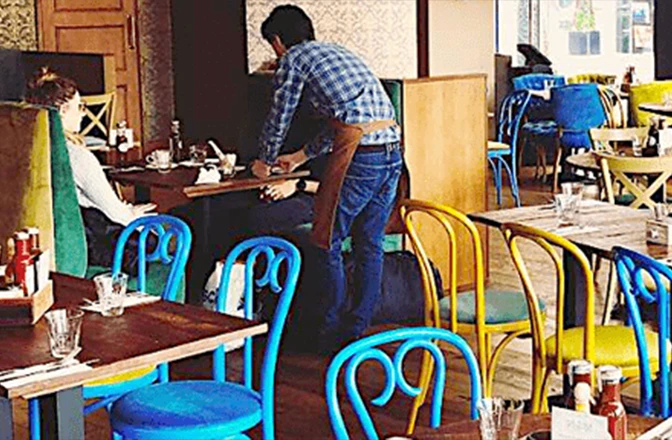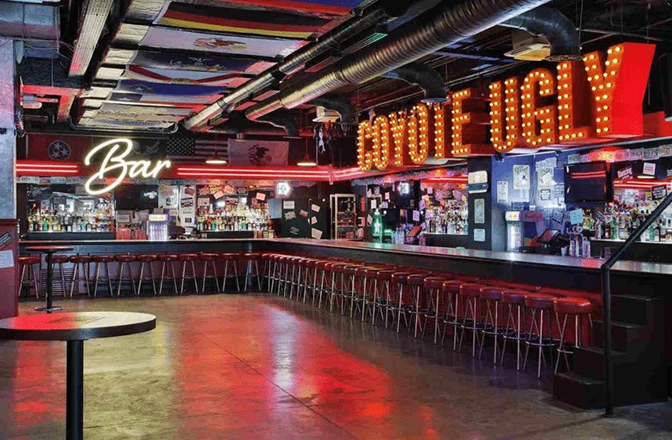Throughout the hospitality industry, delivering stellar customer experiences is crucial for success.
This is especially true for restaurant owners.
One of the most effective ways to achieve this is by making use of Customer Relationship Management (CRM) systems, tailored specifically for the unique needs of restaurants.
From streamlining reservations and managing customer feedback to creating custom marketing campaigns, the right CRM can transform how you connect with your patrons and optimise your operations for all-round success.
That’s why we’ve curated a list of the top 10 restaurant CRM systems for restaurants that can help you boost customer satisfaction, encourage loyalty, and ultimately drive your business growth.
Whether you’re a small café or a large restaurant chain, these CRM tools offer a variety of features to meet your specific needs.
10 Best Restaurant CRM Systems
- Paytronix
- Airship
- Stampede
- SevenRooms
- Braze
- Como Sense
- Punchh
- Wisely
- OpenTable Relationship Management
- Eagle Eye

Paytronix CRM is a robust customer relationship management solution designed specifically for the restaurant and hospitality industry.
It offers a comprehensive platform that not only helps you manage customer relationships but also drives engagement and loyalty through its powerful suite of tools.
Key Features
- Personalised Marketing Campaigns: Paytronix CRM allows you to create highly targeted marketing campaigns based on customer data and behaviour. Whether it’s sending tailored offers to frequent diners or re-engaging lapsed customers, the platform’s segmentation capabilities ensure your messaging resonates with each customer.
- Loyalty Programs Integration: Seamlessly integrate your loyalty programs with Paytronix CRM to reward customers and keep them coming back. The platform tracks customer interactions across various channels, allowing you to offer individualised rewards that enhance customer retention.
- Advanced Analytics: Paytronix provides in-depth analytics that offer insights into customer preferences, spending habits, and overall satisfaction. These insights enable you to make data-driven decisions to improve your marketing strategies and operational efficiency.
- Online Ordering and Delivery Integration: With Paytronix, you can integrate online ordering and delivery services, ensuring a cohesive customer experience both in-person and digitally. This integration helps you capture valuable customer data from all touchpoints, which can be used to further enhance and personalise their dining experience.
Why Choose Paytronix CRM?
Paytronix stands out for its ability to combine customer relationship management with powerful loyalty and marketing tools, making it an all-in-one solution for restaurants looking to enhance customer engagement.
Its focus on personalisation and data-driven insights ensures that you can build lasting relationships with your customers while driving repeat business.
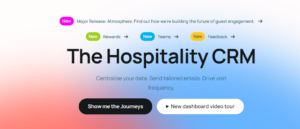
Airship is a versatile CRM system designed to help restaurants build meaningful relationships with their customers through effective data management and targeted communication.
Known for its user-friendly interface and powerful features, Airship CRM is a popular choice for restaurants looking to easily elevate their customer engagement strategies.
Key Features
- Data-Driven Campaigns: Airship CRM excels at turning customer data into actionable insights. By analysing customer behaviour and preferences, the platform allows you to create targeted marketing campaigns that resonate with your audience. Whether it’s sending out special offers or seasonal promotions, Airship ensures your messages hit the mark.
- Seamless Integration: One of Airship’s standout features is its ability to integrate smoothly with your existing systems, including POS systems and reservation platforms. This ensures that all customer data is centralised, giving you a complete view of each customer’s journey and interactions with your restaurant.
- Automated Workflows: Save time and increase efficiency with Airship’s automated workflows. From welcome emails to birthday offers, the platform can automate a wide range of customer communications, ensuring timely and consistent engagement without the need for costly manual intervention.
- Rich Analytics: Airship provides robust analytics that help you understand the impact of your campaigns. Track metrics such as open rates, conversion rates, and customer retention to continually refine your strategies and achieve better results.
Why Choose Airship CRM?
Airship CRM is ideal for restaurants looking to streamline their customer engagement processes and maximise the value of their data.
Its ability to integrate with existing systems, coupled with powerful automation and analytics, makes it a comprehensive solution for enhancing customer loyalty and driving repeat business.

Stampede CRM is an innovative platform designed to help restaurants increase footfall, improve customer retention, and boost revenue through intelligent customer engagement.
With a focus on automation and simplicity, Stampede provides the tools you need to manage customer relationships efficiently while driving growth.
Key Features
- Automated Customer Engagement: Stampede CRM excels at automating customer interactions, allowing you to send personalised messages and offers without manual effort. From welcome messages to re-engagement campaigns, the platform ensures that your customers are consistently engaged with your brand.
- Guest Wi-Fi Integration: One of Stampede’s unique features is its integration with guest Wi-Fi. This allows you to capture valuable customer data when they log into your Wi-Fi network, which can then be used to create targeted marketing campaigns and personalised experiences.
- Loyalty Programs and Rewards: Stampede makes it easy to set up and manage loyalty programs that encourage repeat visits. Whether it’s points-based rewards or exclusive offers, the platform helps you keep your customers coming back.
- Comprehensive Analytics: With Stampede, you can access detailed analytics that provide insights into customer behaviour, campaign performance, and overall business impact. These insights enable you to make informed decisions and continuously optimise your marketing strategies.
Why Choose Stampede CRM?
Stampede CRM is ideal for restaurants looking to enhance customer engagement through automation and data-driven strategies.
Its integration with guest Wi-Fi and its focus on loyalty make it a powerful tool for building strong, lasting relationships with your customers while driving repeat business.

SevenRooms CRM is a comprehensive platform that goes beyond traditional customer relationship management by offering tools designed to enhance the entire guest experience.
From reservations to tailored service, SevenRooms empowers restaurants to deliver exceptional hospitality while building meaningful relationships with their customers.
Key Features
- Guest Profiles and Personalisation: SevenRooms creates detailed guest profiles that capture important information such as dining preferences, allergies, and past visits. This allows your staff to provide personalised service that delights customers and makes them feel valued, ultimately enhancing the overall dining experience.
- Reservation Management: SevenRooms seamlessly integrates with your reservation system, enabling you to manage bookings more efficiently. The platform not only tracks reservations but also helps optimise seating arrangements and reduce no-shows through automated reminders.
- Marketing Automation: With SevenRooms, you can automate your marketing efforts by sending targeted messages and offers to specific guest segments. Whether it’s a birthday promotion or a follow-up after a special event, the platform ensures that your communications are timely and relevant.
- Loyalty and Retention: SevenRooms helps you build customer loyalty through tailored loyalty programs and rewards. By understanding your guests’ preferences and behaviours, you can create experiences that encourage repeat visits and long-term loyalty.
- Actionable Insights: SevenRooms provides powerful analytics that give you a deep understanding of your customers and business performance. From tracking guest satisfaction to monitoring campaign success, these insights allow you to continuously refine your strategies.
Why Choose SevenRooms CRM?
SevenRooms CRM is perfect for restaurants that prioritise guest experience and personalisation.
Its ability to manage reservations, deliver personalised service, and automate marketing makes it an invaluable tool for restaurants looking to foster strong customer relationships and improve retention.

Braze is a powerful customer engagement platform that enables restaurants to connect with their customers across multiple channels in a personalised and meaningful way.
Known for its scalability and advanced capabilities, Braze CRM is an excellent choice for restaurants looking to create cohesive, data-driven customer experiences.
Key Features
- Cross-Channel Messaging: Braze allows you to reach your customers through a variety of channels, including email, SMS, push notifications, and in-app messages. This ensures that your communications are delivered in the right place at the right time, maximising engagement and response rates.
- Personalisation at Scale: With Braze, you can create highly personalised marketing campaigns tailored to individual customer behaviours and preferences. The platform’s sophisticated segmentation and automation tools make it easy to deliver relevant content to the right audience, whether it’s a special offer or a loyalty reward.
- Real-Time Data and Analytics: Braze provides real-time data that allows you to monitor customer interactions and campaign performance as they happen. This enables you to make quick adjustments and optimise your strategies on the fly, ensuring that you’re always delivering the best possible customer experience.
- Integration Capabilities: Braze integrates seamlessly with a wide range of other systems, including POS systems, loyalty programs, and analytics tools. This ensures that all your customer data is connected and accessible, providing a holistic view of each customer’s journey.
- Campaign Orchestration: Braze’s orchestration tools allow you to manage complex marketing campaigns across multiple channels with ease. From scheduling messages to coordinating cross-channel efforts, the platform helps you maintain consistency and coherence in your customer communications.
Why Choose Braze CRM?
Braze CRM is ideal for restaurants looking to engage customers across multiple touchpoints with personalised, data-driven messaging.
Its ability to handle complex campaigns and provide real-time insights makes it a powerful tool for enhancing customer engagement and driving business growth.
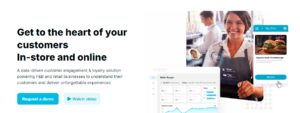
Como Sense is a versatile CRM platform designed to help restaurants enhance customer engagement and loyalty through advanced data analysis and personalised experiences.
With a focus on creating seamless and rewarding customer journeys, Como Sense empowers restaurants to build strong, lasting relationships with their patrons.
Key Features
- Personalised Loyalty Programs: Como Sense offers robust tools for creating customised loyalty programs that resonate with your customers. Whether it’s a points-based system, punch cards, or exclusive VIP rewards, the platform allows you to design a loyalty program that fits your brand and encourages repeat visits.
- Advanced Customer Segmentation: With Como Sense, you can segment your customers based on their behaviour, preferences, and demographics. This allows you to deliver highly targeted marketing campaigns and offers that are tailored to each customer group, maximising engagement and conversion rates.
- Mobile App Integration: Como Sense provides seamless integration with mobile apps, enabling you to offer a personalised and convenient experience to your customers. Through the app, customers can easily access their loyalty rewards, receive personalised offers, and make reservations, all while staying connected to your brand.
- Automated Marketing Campaigns: The platform’s automation capabilities allow you to set up and run marketing campaigns with minimal manual effort. From sending welcome messages to new customers to re-engaging lapsed ones, Como Sense ensures that your communications are timely and relevant.
- Comprehensive Analytics: Como Sense offers detailed analytics that give you insights into customer behaviour, campaign effectiveness, and overall business performance. These insights help you make informed decisions and continually optimise your marketing strategies.
Why Choose Como Sense CRM?
Como Sense CRM is perfect for restaurants that want to build personalised loyalty programs and engage customers through data-driven marketing.
Its mobile integration and automation features make it easy to provide a seamless and rewarding customer experience, helping to drive loyalty and increase revenue.

Punchh CRM is a leading customer loyalty and engagement platform tailored specifically for the restaurant industry.
Known for its ability to drive repeat business through personalised marketing and robust loyalty programs, Punchh helps restaurants build strong connections with their customers across multiple channels.
Key Features
- Omnichannel Loyalty Programs: Punchh allows you to create and manage comprehensive loyalty programs that operate seamlessly across in-store, online, and mobile channels. Whether customers are dining in, ordering takeout, or engaging with your brand online, Punchh ensures a consistent and rewarding experience.
- AI-Driven Personalisation: Punchh leverages artificial intelligence to deliver personalised marketing campaigns that are tailored to individual customer behaviours and preferences. The platform’s AI capabilities enable you to predict customer needs and engage them with the right offers at the right time, boosting customer satisfaction and loyalty.
- Real-Time Data Insights: Punchh provides real-time data analytics that give you a deep understanding of customer behaviour, campaign performance, and overall business impact. These insights help you refine your marketing strategies, optimise your loyalty programs, and make informed decisions that drive growth.
- Mobile App Integration: With Punchh, you can easily integrate your loyalty programs into a custom-branded mobile app. This allows customers to access rewards, receive personalised offers, and engage with your brand directly from their smartphones, improving both convenience and engagement.
- Simple Integrations: Punchh integrates with a wide range of POS systems, online ordering platforms, and other restaurant technologies, ensuring that all customer data is centralised and accessible. This integration enables you to create a unified customer experience across all touchpoints.
Why Choose Punchh CRM?
Punchh CRM is an excellent choice for restaurants looking to enhance customer loyalty through personalised, data-driven engagement.
Its AI-driven personalisation, omnichannel loyalty programs, and real-time analytics make it a powerful tool for building lasting customer relationships and driving repeat business.
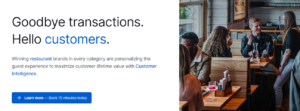
Wisely CRM is a powerful customer engagement and intelligence platform designed to help restaurants understand and connect with their customers on a deeper level.
By combining advanced data analytics with targeted marketing capabilities, Wisely enables restaurants to deliver exceptional customer experiences and drive loyalty.
Key Features
- Comprehensive Guest Profiles: Wisely CRM creates detailed guest profiles that capture important information such as dining preferences, visit history, and spending patterns. This allows you to tailor interactions, as well as your service, to meet the unique needs of each guest, enhancing their overall experience.
- Waitlist and Reservation Management: Wisely offers robust tools for managing waitlists and reservations, ensuring a smooth and efficient dining experience for your guests. The platform’s predictive analytics help optimise table turnover and reduce wait times, improving customer satisfaction.
- Predictive Analytics: Wisely’s predictive analytics capabilities allow you to anticipate customer needs and behaviours, enabling you to engage them with timely and relevant offers. Whether it’s predicting when a customer is likely to return or identifying high-value guests, these insights help you make data-driven decisions that boost loyalty.
- Personalised Marketing Campaigns: With Wisely, you can create highly targeted marketing campaigns that resonate with your customers. The platform’s segmentation and automation tools ensure that your messages reach the right audience at the right time, increasing the effectiveness of your campaigns.
- Integrations: Wisely integrates seamlessly with a variety of restaurant technologies, including POS systems, reservation platforms, and loyalty programs. This integration ensures that all customer data is connected and accessible, providing a holistic view of each guest’s journey.
Why Choose Wisely CRM?
Wisely CRM is ideal for restaurants that want to deepen their understanding of their customers and deliver personalised experiences that drive loyalty.
Its advanced analytics, reservation management, and seamless integrations make it a comprehensive solution for enhancing customer engagement and improving operational efficiency.

OpenTable Relationship Management is a CRM solution that leverages the power of one of the world’s most popular reservation platforms to help restaurants build and maintain strong relationships with their guests.
Designed with the unique needs of the restaurant industry in mind, OpenTable’s CRM tools offer valuable insights and personalised engagement opportunities.
Key Features
- Integrated Reservation Management: OpenTable CRM is seamlessly integrated with OpenTable’s reservation platform, allowing you to capture and utilise guest data directly from reservations. This integration ensures that you have access to comprehensive guest profiles, including dining preferences, special requests, and visit history.
- Personalised Guest Experience: With OpenTable CRM, you can deliver a more personalised dining experience by leveraging guest data to tailor your service. From greeting repeat customers by name to anticipating their favourite dishes, these personalised touches enhance the overall guest experience and encourage repeat visits.
- Automated Marketing Campaigns: OpenTable allows you to create and send automated marketing campaigns based on guest data. Whether it’s a thank-you message after a visit, a special offer for a birthday, or a re-engagement campaign for lapsed guests, OpenTable helps you stay connected with your customers in a meaningful way.
- Feedback and Reviews Management: OpenTable provides tools to manage and respond to guest feedback and reviews directly through the platform. This helps you maintain a positive online reputation while addressing any issues that may arise, ensuring that guests feel heard and valued.
- Actionable Insights: OpenTable CRM offers detailed analytics that provide insights into guest behaviour, dining trends, and the effectiveness of your marketing campaigns. These insights enable you to make informed decisions that enhance guest satisfaction and drive business growth.
Why Choose OpenTable Relationship Management?
OpenTable Relationship Management is an excellent choice for restaurants that want to leverage the extensive data captured through reservations to enhance customer engagement.
Its integration with the reservation platform, coupled with personalised marketing and feedback management tools, makes it a powerful solution for improving guest relationships and driving loyalty.
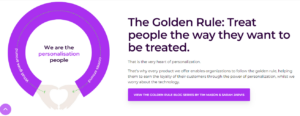
Eagle Eye is a leading digital marketing platform that empowers restaurants to connect with their customers through personalised, data-driven engagement strategies.
By offering a suite of tools designed to enhance loyalty and drive customer retention, Eagle Eye helps restaurants build stronger relationships and increase repeat business.
Key Features
- Digital Loyalty Programs: Eagle Eye allows you to create and manage digital loyalty programs that are easy for customers to join and use. Whether it’s through a mobile app, email, or in-store, Eagle Eye’s platform ensures that your loyalty programs are seamlessly integrated across all touchpoints.
- Personalised Marketing Campaigns: With Eagle Eye, you can design and execute personalised marketing campaigns that resonate with your customers. The platform’s segmentation and targeting capabilities enable you to send relevant offers and messages based on customer preferences and behaviours, increasing the likelihood of engagement.
- Real-Time Customer Insights: Eagle Eye provides real-time analytics and insights into customer behaviour, helping you understand what drives engagement and loyalty. These insights allow you to tailor your marketing strategies to better meet the needs of your customers and optimise your campaigns for better results.
- Omnichannel Engagement: Eagle Eye supports omnichannel engagement, allowing you to reach your customers through various channels such as email, SMS, social media, and mobile apps. This ensures that your brand remains top of mind, no matter where your customers are interacting with you.
- System Integrations: Eagle Eye integrates with a wide range of existing systems, including POS systems and CRM platforms, to ensure that all customer data is centralised and accessible. This integration helps create a unified customer experience across all platforms.
Why Choose Eagle Eye CRM?
Eagle Eye CRM is ideal for restaurants looking to enhance customer loyalty through digital innovation and personalised engagement.
Their focus on real-time insights, omnichannel marketing, and seamless integration makes it a powerful tool for building lasting customer relationships and driving business growth.
Conclusion
As more and more of the competition adopt CRM’s, staying connected with your customers and delivering personalised experiences is more important than ever.
The right CRM platform can make all the difference in how you manage customer relationships, drive loyalty, and ultimately grow your business.
Whether you’re looking for advanced analytics, seamless integrations, or powerful marketing automation, the CRMs we’ve highlighted offer a range of features designed to meet the unique needs of the restaurant industry.
By investing in one of these top CRMs, you can streamline your operations, enhance customer satisfaction, and build lasting relationships that keep your guests coming back.
Explore these options, evaluate your specific needs, and make a decision that will support your restaurant’s growth and success in the long run.
Contact NFS Hospitality for help choosing the right platform for your needs.
Find out more about NFS Hospitality’s restaurant epos systems.
Fostering customer loyalty has never been more crucial for a restaurant’s success.
In a time where diners are spoiled for choice, businesses need to go beyond offering great food and service—they need to build lasting relationships with their patrons.
Designed to reward repeat visits, restaurant loyalty programs not only incentivise customers to return but also create a sense of belonging and value that can turn occasional diners into regulars.
To help set you up for success, we’ll explore how effective customer loyalty programs can be a game-changer for restaurants, driving repeat business and improved customer satisfaction.
Why Loyalty Programs Matter for Restaurants
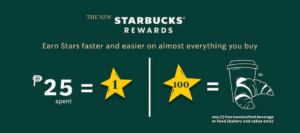
With customer preferences and trends always evolving, loyalty programs have emerged as a powerful tool to not only attract but also retain customers.
Here’s a closer look at why these programs are crucial for a restaurant’s success:
Increasing Customer Retention
Customer retention is generally more cost-effective than acquiring new customers. Loyalty programs improve customer retention by offering incentives that encourage diners to return.
For example, a loyalty program that rewards customers with points, which can be redeemed for discounts or free items, creates a strong motivation for customers to choose your restaurant.
When customers know they are working towards a reward, they are more likely to make your restaurant their go-to choice, even if there are other options available.
Building Brand Affinity
Brand affinity goes beyond recognition—it’s about forming an emotional connection between the customer and your restaurant.
A well-executed loyalty program can make customers feel valued and appreciated by offering personalised rewards and experiences, which in turn fosters deeper loyalty.
For instance, a loyalty program that offers rewards like early access to new menu items or invitations to special events can make customers feel like they are part of an exclusive club.
This sense of belonging can lead to a stronger attachment to your brand, making customers not only return more frequently but also advocate for your restaurant within their social circles.
Competitive Advantage
In a market saturated with dining options, standing out requires more than just offering excellent food and service. A well-designed loyalty program can be the differentiator that sets your restaurant apart.
While other restaurants may rely solely on traditional marketing or word of mouth, a loyalty program offers a tangible reason for customers to choose your establishment repeatedly.
This is especially significant in areas where customers have an abundance of choices.
A loyalty program that is easy to use, offers meaningful rewards, and aligns with your brand’s values can make your restaurant the preferred choice in a crowded marketplace.
The Psychology Behind Loyalty Programs
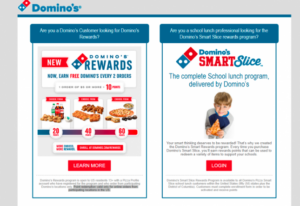
By tapping into fundamental human behaviours and motivations, restaurants can create programs that not only reward customers but also foster long-term loyalty.
Here’s how psychology plays a role in the success of these programs:
The Reward Principle
At the core of any successful loyalty program is the concept of positive reinforcement.
The Reward Principle, rooted in behavioural psychology, suggests that when a behaviour is followed by a positive outcome, such as earning points or receiving a discount, that behaviour is likely to be repeated.
Over time, this consistent positive reinforcement can lead to habitual behaviour, where the customer automatically chooses your restaurant because they associate it with positive outcomes.
Creating a Habit
Habits are formed when behaviours are repeated regularly and become automatic responses to specific cues. Loyalty programs can play a crucial role in transforming occasional visits into habitual dining experiences.
By providing consistent incentives, such as points, discounts, or exclusive perks, loyalty programs create a pattern of behaviour that customers are likely to repeat.
This can develop into a routine where visiting your restaurant becomes a default choice, driven by the anticipation of earning rewards. The key is to design the program so that it seamlessly integrates into the customer’s life, making it easy and rewarding to keep coming back.
Fostering a Sense of Community
The desire to belong to a community is a powerful motivator.
Loyalty programs can tap into this by creating a sense of exclusivity and shared experience among members. When customers see others participating in the program and enjoying the rewards, it indicates that the program is valuable and worth joining.
Loyalty programs can enhance this sense of community by offering rewards that are best enjoyed in a group setting or by fostering interactions between members.
For example, a restaurant might host special events for loyalty program members, such as tasting nights or member-only happy hours. These events create opportunities for customers to connect with each other, strengthening their bond with the brand.
Key Features of A Successful Restaurant Loyalty Program
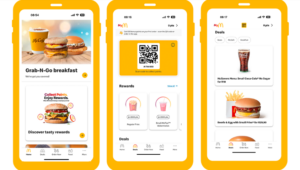
Creating a successful restaurant loyalty program requires a careful balance of simplicity, personalisation, and diversity in rewards.
These features are what make a loyalty program not only attractive to customers but also effective in driving repeat business and fostering long-term loyalty.
Simplicity and Accessibility
The foundation of any successful loyalty program is simplicity and accessibility. If a program is too complicated or difficult to join, customers are likely to be discouraged from participating.
To ensure high participation, the enrollment process should be straightforward, allowing customers to sign up with minimal effort—whether through a mobile app, website, or in-person at the restaurant.
Customers should find it easy to understand how to earn and redeem rewards.
Clear communication of the program’s structure—such as how points are accumulated, what rewards are available, and how they can be redeemed—is crucial. A simple, intuitive system encourages more frequent participation and reduces the chances of customer frustration.
Personalisation
Personalisation is a powerful tool in making customers feel valued and appreciated.
By tailoring rewards to individual preferences, restaurants can create a more engaging loyalty program.
For instance, using customer data collected through the loyalty program, restaurants can identify customer preferences, such as favourite dishes, dining times, or spending habits.
This data can then be used to offer tailored rewards, such as complimentary appetisers that the customer often orders or a discount on their next visit at their preferred time.
Personalisation can also extend beyond the rewards themselves to the way they are communicated.
Personalised emails or app notifications that address the customer by name and highlight relevant rewards or promotions can make the program feel more exclusive and tailored to the individual.
A Variety of Rewards
A successful loyalty program offers a variety of rewards to appeal to different customer motivations and preferences. While discounts and free items are always popular, offering a diverse range of rewards can make the program more appealing and cater to a broader audience.
In addition to traditional rewards like free meals or discounts, consider offering unique experiences that cannot be easily accessed by non-members.
These could include invitations to exclusive tasting events, cooking classes with the restaurant’s chef, or early access to new menu items.
These types of rewards not only incentivise customers to participate in the loyalty program but also create memorable experiences that deepen their connection to the brand.
Another approach is to incorporate non-monetary rewards, such as priority seating, personalised service, or even recognition within the restaurant. For example, a customer who reaches a certain loyalty tier could have their name displayed on a plaque or receive a special thank-you note.
These small gestures can have a big impact on customer satisfaction and loyalty.
Offering a variety of rewards also allows customers to choose the rewards that best align with their preferences, making the program feel more flexible and accommodating.
Challenges and Pitfalls to Avoid
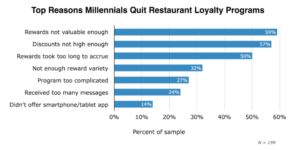
While loyalty programs can be highly effective in driving repeat business and fostering customer loyalty, they are not without their challenges.
Here are some common pitfalls and how to avoid them:
Overcomplicating the Program
One of the most significant risks in designing a loyalty program is overcomplicating it. While it may be tempting to create a program with multiple tiers, varied rewards, and complex rules, this can often backfire.
Simplicity is key to success.
Customers should be able to easily grasp the program’s mechanics—how to earn rewards, what they need to do to redeem them, and the benefits of participating.
If customers find the user interface difficult to navigate, they are less likely to participate.
Ensuring the program is easy to join, easy to use, and easy to understand will help maintain customer interest and participation.
Lack of Customer Engagement
Another challenge is maintaining customer engagement over the long term. Even the best-designed loyalty program can lose its appeal if customers don’t feel continually motivated to participate.
One way to maintain engagement is by regularly updating the rewards and introducing new, exciting incentives. Another strategy is to personalise the rewards based on customer preferences, making them more relevant and appealing.
Communication is also crucial in keeping customers engaged. Regularly reminding customers of their progress towards rewards, upcoming promotions, or special offers can keep the program top-of-mind.
Finally, incorporating elements of gamification, such as challenges, leaderboards, or bonus points for completing certain tasks, can add an element of fun and competition to the program.
Failing to Adapt
Customer expectations are regularly evolving.
A loyalty program that was effective when first launched may become outdated if it doesn’t evolve with changing trends and customer preferences.
To avoid this, it’s critical to continuously gather and analyse customer feedback.
Surveys, focus groups, and direct feedback through digital channels can provide valuable insights into what customers like and dislike about the program.
Staying abreast of industry trends is vital too. For example, if mobile payments and digital wallets are becoming more popular, integrating these into your loyalty program could enhance the customer experience.
Integrating Loyalty Programs with Other Marketing Strategies

A well-designed loyalty program is more than just a standalone initiative; it can be a powerful component of your broader marketing strategy.
By integrating your loyalty program with other promotional activities, you can amplify its impact, increase customer engagement, and enhance your overall marketing efforts.
Here’s how:
Cross-Promotions
By tying your loyalty program into other promotions and events, you can create a cohesive and compelling customer experience.
For example, you might offer double points during special events, such as holidays or restaurant anniversaries, encouraging customers to participate in both the event and the loyalty program.
Another strategy is to link the loyalty program with seasonal promotions.
If you’re running a summer special menu, you could offer bonus points for trying new dishes from that menu. This not only drives traffic during the promotion but also incentivises customers to return, knowing they’re working towards a reward.
Cross-promotions can also extend beyond your restaurant.
Partnering with local businesses or brands that align with your values can add an extra layer of appeal to your loyalty program. You could offer loyalty points for purchases made at a nearby boutique or give members access to exclusive deals with partner brands.
This creates a win-win situation where both businesses benefit from increased visibility and customer engagement.
Data-Driven Insights
Every interaction, purchase, and reward redemption provides insights into customer behaviour, preferences, and spending patterns. Leveraging this valuable customer data can enhance your marketing strategies.
By analysing loyalty program data, you can identify your most loyal customers and tailor marketing messages specifically to them. This could include personalised offers, invitations to exclusive events, or early access to new menu items.
The more you know about your customers, the better you can meet their needs and expectations, resulting in higher engagement and satisfaction.
Additionally, loyalty program data can help you identify trends and preferences across your customer base. If you notice that a particular dish or drink is popular among your loyalty members, you could feature it more prominently in your marketing campaigns or create special promotions around it.
Data from your loyalty program can inform broader business decisions as well, such as menu changes, pricing strategies, and even the introduction of new services.
By continuously analysing and acting on this data, you can stay ahead of customer expectations and maintain a competitive edge in the market.
Social Media Integration
Encouraging customers to share their loyalty milestones on social media not only boosts their sense of achievement but also acts as organic promotion for your restaurant.
You can promote social sharing by offering additional rewards or points for customers who post about their loyalty program achievements, such as reaching a new tier or redeeming a reward.
Creating a unique hashtag for your loyalty program can help you track these posts and build a community around your brand.
Beyond individual posts, you can leverage social media to highlight your loyalty program in broader marketing campaigns. Feature customer stories, loyalty milestones, and exclusive rewards on your restaurant’s social media channels to create buzz and encourage others to join the program.
Finally, social media can be a platform for interactive campaigns tied to your loyalty program.
For instance, you could run a contest where customers earn points for participating in online challenges, like posting a creative dish photo or tagging friends who haven’t visited your restaurant yet.
Conclusion
Customer loyalty is more valuable and important than ever.
A well-designed loyalty program is a powerful tool to drive repeat business, build lasting relationships, and differentiate your restaurant from the competition.
By understanding the psychology behind loyalty programs, avoiding common pitfalls, and integrating these programs with broader marketing strategies, restaurants can create a loyalty experience that keeps customers coming back time and again.
From increasing customer retention to fostering brand affinity and leveraging data-driven insights, loyalty programs offer numerous benefits that extend far beyond simple rewards.
As you consider implementing or refining your loyalty program, remember that simplicity, engagement, and adaptability are key. Stay connected with your customers, listen to their feedback, and continuously evolve your program to meet their needs and expectations.
For assistance selecting the best platform for your loyalty program, talk to NFS Hospitality.
For restaurants looking to stand out, customer loyalty is more critical than ever. Restaurants not only need to attract new guests but also foster relationships that keep them returning and reward customers.
This is the goal of customer loyalty programs, offering innovative ways to reward repeat customers and turn casual diners into devoted regulars by encouraging brand loyalty.
Whether you’re a cosy café or a bustling fine dining establishment, the right loyalty program can enhance your customer experience, drive sales, and build a consistent customer base of loyalty program members.
To get you started on your journey, we’ll explore the top 10 loyalty systems for restaurants, helping you find the perfect fit for your business to cultivate lasting loyal customers with your customers.
What’s the Best Customer Loyalty Program for Restaurants?
- Paytronix Loyalty
- Revel Systems Loyalty Programs
- Arch Loyalty
- Teya Loyalty
- Oracle CrowdTwist Loyalty and Engagement
- Stampede Loyalty
- Acteol Hospitality Loyalty
- Como Sense
- SevenRooms Perks
- Lunchbox Loyalty

Overview:
Paytronix is a leading loyalty platform designed to help restaurants create personalised, data-driven customer experiences.
With its robust set of features, Paytronix enables businesses to engage customers at every touchpoint, from the first visit to long-term loyalty.
Key Features:
- Personalised Engagement: Paytronix allows you to tailor your rewards program and offers based on individual customer preferences and behaviour’s, increasing the relevance and effectiveness of your rewards programs.
- Omnichannel Integration: Whether customers order online, dine-in, or use a mobile app, Paytronix seamlessly integrates across all channels, ensuring a consistent experience.
- Data-Driven Insights: The platform provides comprehensive analytics and reporting tools, helping you understand customer trends and optimise your loyalty strategies accordingly.
- Automation: With automated marketing campaigns and loyalty management, Paytronix reduces the manual workload while enhancing customer engagement.
- Flexible Rewards Structure: The platform supports various types of rewards, including the points based loyalty program, the tiered loyalty program, and special promotions, giving you the flexibility to design a program and program benefits that best suit your restaurant’s needs.
Why It Stands Out:
Paytronix stands out for its ability to deliver highly personalised customer experiences.
Its powerful analytics tools enable restaurants to make data-driven decisions, ensuring that your restaurant loyalty program are not just effective but also continually evolving to meet customer expectations and encourage customers to return.
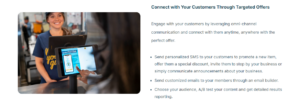
Overview:
Revel Systems offers a comprehensive loyalty scheme that integrates seamlessly with its point-of-sale (POS) system, providing restaurants with an all-in-one solution for retaining customers.
Known for its user-friendly interface and robust functionality, Revel Systems helps restaurants of all sizes create and manage effective loyalty programs that keep customers coming back.
Key Features:
- Integrated POS Loyalty: The loyalty program is fully integrated with Revel’s POS, allowing for real-time tracking of customer purchases and rewards directly at the point of sale.
- Customisable Programs: Revel Systems enables you to design a loyalty program that fits your brand, whether customers earn points, use punch cards, or receive custom promotions.
- Real-Time Analytics: Access detailed reports and insights into customer behaviour and program performance, enabling data-driven decisions to enhance your loyalty strategy.
- Mobile App Integration: Loyalty members can easily track their rewards and receive offers through a mobile app, creating a seamless experience from in-store to on-the-go.
- Automated Marketing: Revel Systems offers automated marketing tools that allow you to send targeted promotions and rewards to customers based on their preferences and purchase history.
Why It Stands Out:
Revel Systems is particularly appealing for restaurants already using or considering its POS system, as the integrated loyalty program offers a streamlined approach to managing customer rewards.
The ease of use and depth of customisation make it a strong contender for businesses looking to build and maintain customer loyalty.
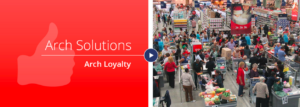
Overview:
Arch Loyalty, developed by Arch Software, is a sophisticated loyalty management solution designed to help restaurants foster stronger relationships with their customers.
With a focus on flexibility and ease of use, Arch Loyalty allows restaurants to create and manage personalised loyalty programs that drive repeat business and increase customer satisfaction.
Key Features:
- Customisable Loyalty Programs: Arch Loyalty offers a wide range of customisation options, enabling restaurants to design program benefits that align with their brand and customer expectations, whether through points, tiers, or specific rewards.
- Real-Time Data Access: The platform provides instant access to customer data and program performance metrics, allowing for quick adjustments and targeted marketing efforts based on real-time insights.
- Multi-Channel Integration: Arch Loyalty supports integration across various channels, including in-store, online, and mobile, ensuring a seamless experience for customers no matter how they engage with your restaurant.
- Automated Communication: The system includes tools for automated customer communication, such as sending personalised offers, birthday rewards, and reminders, all tailored to individual customer behaviour.
- Scalable Solution: Whether you’re a small café or a large restaurant chain, Arch Loyalty is designed to scale with your business, making it a versatile option for growth.
Why It Stands Out:
Arch Loyalty is particularly valued for its flexibility and the ability to tailor loyalty programs to the specific needs of a restaurant.
Its multi-channel integration and real-time data capabilities ensure that restaurants can effectively engage customers wherever they are, making it a robust choice for those looking to boost customer loyalty.

Overview:
Teya offers a powerful and intuitive loyalty platform that helps restaurants cultivate lasting relationships with their customers.
With a focus on simplicity and effectiveness, Teya’s loyalty system is designed to make it easy for restaurants to reward repeat customers, enhance customer engagement, and drive sales growth.
Key Features:
- Simple Setup and Management: Teya’s loyalty program is easy to set up and manage, allowing restaurant owners to create effective loyalty campaigns without needing extensive technical knowledge.
- Customisable Reward Structures: The platform supports various types of loyalty schemes, from points-based rewards to cashback offers, giving restaurants the flexibility to tailor their programs to their specific customer base.
- Integrated Payment Solutions: Teya’s loyalty system is seamlessly integrated with its payment processing services, providing a smooth experience for both customers and staff at the point of sale.
- Real-Time Analytics: Gain insights into customer behaviour and program performance with Teya’s real-time analytics, helping you refine your loyalty strategies and better understand your customers.
- Omnichannel Experience: Teya ensures that your loyalty program works across all customer touchpoints, including in-store, online, and mobile, offering a consistent experience no matter how your customers interact with your brand.
Why It Stands Out:
Teya is particularly well-suited for restaurants looking for a loyalty system that’s easy to implement and manage.
Its seamless integration with payment processing and its focus on providing a smooth, omnichannel experience make it a compelling choice for restaurants aiming to enhance customer loyalty without added complexity.

Overview:
Oracle Customer Loyalty is a comprehensive and advanced loyalty management platform that caters to restaurants looking to build strong, data-driven relationships with their customers.
Part of Oracle’s broader suite of customer experience solutions, this platform offers powerful tools for creating sophisticated loyalty programs that enhance customer engagement and drive long-term loyalty.
Key Features:
- Advanced Personalisation: Oracle Customer Loyalty allows restaurants to create highly personalised loyalty experiences, using AI and data analytics to tailor rewards and offers to individual customer preferences and behaviours.
- Scalable and Flexible: The platform is designed to scale with your business, supporting everything from single-location eateries to large restaurant chains with multiple locations and complex loyalty requirements.
- Omnichannel Loyalty Management: Oracle provides seamless integration across various customer touchpoints, including in-store, online, and mobile, ensuring a consistent and engaging experience for all customers.
- Comprehensive Analytics: With Oracle’s robust analytics tools, you can gain deep insights into customer behaviour, program performance, and market trends, allowing for data-driven decision-making and continuous optimisation of your loyalty strategies.
- Integration with Oracle Ecosystem: Oracle Customer Loyalty integrates seamlessly with other Oracle CX solutions, enabling restaurants to create a unified customer experience across marketing, sales, and service.
Why It Stands Out:
Oracle Customer Loyalty is ideal for restaurants that require a highly customisable and scalable solution.
Its integration with Oracle’s broader ecosystem and its advanced personalisation capabilities make it a top choice for businesses looking to create sophisticated, data-driven loyalty programs that can grow with their needs.
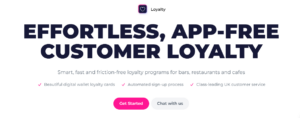
Overview:
Stampede offers a straightforward and effective loyalty solution designed to help restaurants turn one-time visitors into repeat customers.
With an emphasis on simplicity and ease of use, Stampede Loyalty provides restaurants with the tools needed to engage customers, reward loyalty, and drive long-term business growth.
Key Features:
- Easy Setup and Use: Stampede’s loyalty program is designed for quick setup, allowing restaurants to start rewarding customers with minimal effort. The user-friendly interface makes managing the program simple, even for those without technical expertise.
- Customisable Rewards: Restaurants can easily tailor their loyalty programs, choosing from a variety of reward structures such as points-based systems, discounts, or exclusive offers, to suit their customer base.
- Automated Marketing: Stampede includes automated marketing features that allow you to send targeted promotions and rewards to customers based on their behaviour, encouraging repeat visits and increased spending.
- Customer Insights: The platform provides valuable insights into customer behaviour and program performance, helping restaurants optimise their loyalty strategies and better understand what drives customer loyalty.
- Integrated Wi-Fi Marketing: One of Stampede’s standout features is its integration with Wi-Fi marketing, allowing restaurants to capture customer data and engage with guests who connect to their in-house Wi-Fi network.
Why It Stands Out:
Stampede Loyalty is an excellent choice for restaurants looking for an easy-to-implement solution that doesn’t require extensive resources to manage.
Its integration with Wi-Fi marketing is particularly beneficial for capturing customer data and engaging guests in real-time, making it a unique and effective tool for boosting customer loyalty.
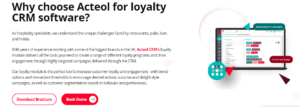
Overview:
Acteol Hospitality Loyalty, part of The Access Group’s suite of hospitality solutions, is a powerful loyalty management system designed to help restaurants build and nurture lasting relationships with their customers.
The platform focuses on delivering a seamless and personalised customer experience, making it easier for restaurants to drive repeat business and enhance customer satisfaction.
Key Features:
- Tailored Loyalty Programs: Acteol Hospitality allows restaurants to create tailored loyalty programs that align with their brand and customer preferences, whether through points-based rewards, tiered memberships, or special promotions.
- Omnichannel Integration: The platform supports integration across multiple channels, ensuring a consistent loyalty experience for customers whether they engage online, in-store, or via mobile.
- Data-Driven Insights: With advanced analytics and reporting tools, Acteol Hospitality provides deep insights into customer behavior, helping restaurants make informed decisions to improve their loyalty strategies.
- Seamless POS Integration: The loyalty system integrates smoothly with Acteol Hospitality’s POS solutions, ensuring that customer rewards are tracked and managed efficiently at the point of sale.
- Automated Customer Engagement: The platform includes tools for automated marketing and communication, allowing restaurants to send personalised offers, reminders, and promotions based on customer data and behaviour.
Why It Stands Out:
Acteol Hospitality Loyalty is particularly well-suited for restaurants that already use or are considering Access Group’s broader hospitality solutions.
Its seamless integration with POS and other systems, along with its strong focus on data-driven decision-making, makes it an excellent choice for restaurants aiming to deliver a personalised and consistent loyalty experience across all customer touchpoints.
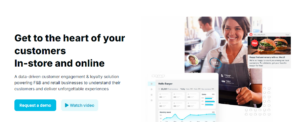
Overview:
Como Sense is a robust and versatile customer engagement and restaurant loyalty software that empowers restaurants to create personalised and effective loyalty programs.
With a focus on data-driven marketing and seamless integration, Como Sense helps restaurants boost customer retention, increase spending, and enhance the overall customer experience.
Key Features:
- Advanced Personalisation: Como Sense enables restaurants to create highly personalised loyalty programs by leveraging valuable customer data to deliver tailored rewards, offers, and experiences based on customer profiles.
- Comprehensive Analytics: The platform provides powerful analytics and reporting tools, offering deep insights into customer preferences, program performance, and campaign effectiveness, allowing for continuous optimisation.
- Omnichannel Integration: Como Sense supports seamless integration across multiple channels, ensuring a consistent and engaging loyalty experience for customers.
- Automated Marketing Campaigns: The platform includes automated marketing tools that allow restaurants to send targeted promotions, birthday rewards, and other personalised communications, enhancing customer engagement.
- Flexible Reward Options: Como Sense offers a wide range of reward structures, from points-based systems to tiered programs and exclusive offers, giving restaurants the flexibility to design a loyalty program that fits their brand and customer base.
Why It Stands Out:
Como Sense is a top choice for restaurants looking to harness the power of data-driven marketing to enhance their loyalty programs.
Its advanced personalisation capabilities and comprehensive analytics tools make it ideal for businesses that want to create highly targeted and effective loyalty strategies that resonate with their customers.
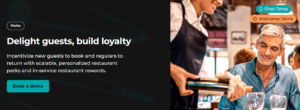
Overview:
SevenRooms Perks is a loyalty and customer engagement platform that’s part of the broader SevenRooms ecosystem, designed specifically for the hospitality industry.
This platform allows restaurants to create bespoke loyalty programs that not only reward repeat customers but also enhance the overall dining experience through personalised service and engagement.
Key Features:
- Integrated Guest Management: SevenRooms Perks is fully integrated with SevenRooms’ guest management system, allowing restaurants to track customer preferences, dining history, and special requests to deliver personalised experiences that drive loyalty.
- Customisable Loyalty Programs: The platform offers flexibility in designing loyalty programs, whether through points, perks, or exclusive access to events, allowing restaurants to tailor their offerings to their customer base.
- Seamless Integration: SevenRooms Perks integrates smoothly with other systems, including reservations, POS, and marketing tools, ensuring that customer rewards are consistently applied and managed across all touchpoints.
- Data-Driven Insights: The platform provides detailed analytics on customer behaviour and program performance, helping restaurants to refine their loyalty strategies and better understand what drives repeat visits.
- Automated Engagement: SevenRooms Perks includes tools for automated communication, enabling restaurants to send personalised offers, reminders, and follow-ups based on customer activity and preferences.
Why It Stands Out:
SevenRooms Perks is particularly appealing for restaurants that prioritise personalized service and guest engagement.
Its integration with the broader SevenRooms platform allows for a seamless customer experience, making it a powerful tool for restaurants looking to elevate their loyalty programs through personalised interactions and data-driven insights.
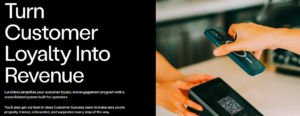
Overview:
Lunchbox Loyalty is a cutting-edge loyalty platform designed specifically for restaurants, offering a comprehensive suite of tools to create, manage, and optimise customer loyalty programs.
With a focus on customisation and integration, Lunchbox Loyalty helps restaurants drive repeat business and increase customer lifetime value by delivering personalised and engaging experiences.
Key Features:
- Highly Customisable Programs: Lunchbox Loyalty allows restaurants to design bespoke loyalty programs that fit their brand, including points-based rewards, tiered systems, and special promotions tailored to customer preferences.
- Omnichannel Integration: The platform supports seamless integration across all customer touchpoints, for a consistent and engaging experience wherever customers interact with your brand.
- Real-Time Analytics: Lunchbox provides real-time insights into customer behaviour and program performance, enabling restaurants to make data-driven decisions and continuously improve their loyalty strategies.
- Automated Marketing Tools: With built-in automation features, Lunchbox Loyalty makes it easy to send targeted offers, reminders, and rewards based on customer activity and preferences, enhancing engagement and encouraging repeat visits.
- Integration with Lunchbox Ecosystem: Lunchbox Loyalty is part of the broader Lunchbox ecosystem, which includes tools for online ordering, delivery, and marketing, providing a unified platform for managing customer interactions and loyalty.
Why It Stands Out:
Lunchbox Loyalty stands out for its high level of customisation and seamless integration with the broader Lunchbox platform.
It’s particularly well-suited for restaurants looking to create a unified and personalised experience across all customer touchpoints, making it a powerful tool for driving customer loyalty and engagement.
Elevate Your Restaurant’s Success with the Right Loyalty System
The right loyalty system not only encourages repeat visits but also rewards customers and helps you build deeper connections, turning them into loyal advocates for your brand.
From robust platforms like Oracle Customer Loyalty and SevenRooms Perks to more streamlined options like Stampede and Lunchbox Loyalty, there’s a solution out there for every type of restaurant, regardless of size or style.
When choosing a loyalty system, consider your restaurant’s specific needs, including the level of customisation you require, the integration with existing systems, and the kind of customer experience you want to create.
Whether you’re looking to drive repeat business through free food or exclusive rewards, leverage data-driven insights, or streamline your customer interactions, the loyalty platforms highlighted in this article offer the tools you need to succeed and continue retaining customers.
For helping finding the best platform for a successful loyalty program, contact NFS Hospitality. Find out more about NFS Hospitality’s loyalty programmes for hospitality.
In the ever-competitive hospitality industry, attracting new customers is only half the battle; retaining them is just as crucial for long-term success.
Customer loyalty software is as a game-changing tool that can help restaurants build lasting relationships with their patrons.
Loyalty programs offer personalised rewards, tracking customer preferences, and providing valuable insights into dining habits. This software not only enhances the dining experience but also drives repeat business via additional rewards.
Why Restaurant Loyalty Software?
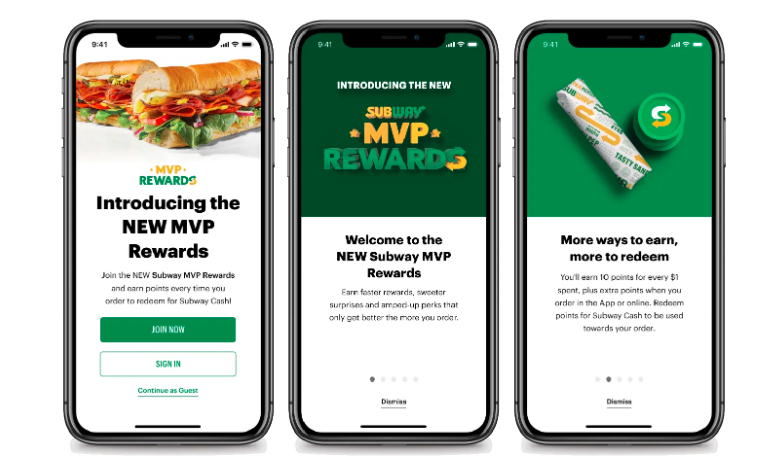
The Importance of Customer Retention in the Restaurant Industry
While attracting new customers is an achievement worth celebrating for any company, it’s just the beginning.
The real battle is the struggle to retain those customers and convert them into frequent diners. Customer retention is crucial for several reasons:
- Cost Efficiency: Securing new customers is often more expensive than retaining existing ones. Marketing campaigns, promotions, and advertisements aimed at attracting new customers require substantial investments. In contrast, retaining customers involves leveraging existing relationships and enhancing customer satisfaction, which is generally more cost-effective.
- Revenue Stability: Loyal customers tend to visit more frequently and spend more per visit compared to new customers. This consistent patronage provides many benefits, such as a stable revenue stream, helping restaurants manage cash flow and plan for growth more effectively.
- Word-of-Mouth Marketing: Satisfied, loyal customers are likely to become advocates for your restaurant. They recommend your establishment to friends, family, and colleagues, providing valuable word-of-mouth marketing that can attract new customers without additional marketing expenses.
- Increased Lifetime Value: The lifetime value of a customer increases significantly when they return repeatedly. By retaining customers, restaurants can maximise the revenue generated from each individual over time, contributing to long-term profitability.
- Competitive Advantage: In a crowded market, rewards programs can be a significant differentiator. Restaurants that build strong relationships with their customers can stand out from the competition, fostering a sense of community and belonging that competitors may struggle to replicate.
Customer Loyalty Software as a Solution
Customer loyalty software is a powerful tool to the challenge of customer retention and developing loyal consumers.
This technology leverages data and automation to create personalised, engaging experiences that keep customers coming back out of brand loyalty.
Here’s how customer loyalty software can transform your restaurant:
- Personalised Rewards: Customer loyalty software allows you to develop reward programs tailored to your customers’ preferences. Whether it’s points for each visit, discounts on favourite dishes, or exclusive access to special events, to earn rewards make customers feel valued.
- Customer Insights: By tracking customer interactions, preferences, and purchasing habits, loyalty software provides valuable insights that can inform your marketing strategies and operational decisions. Understanding what your customers love in this way helps you tailor your offerings to meet their needs more effectively.
- Enhanced Engagement: Loyalty programs incentivise repeat visits and encourage customers to engage more deeply with your brand. Features such as mobile apps, digital loyalty cards, point systems, and real-time notifications about special offers keep your restaurant top of mind.
- Data-Driven Marketing: With access to detailed customer data, you can create targeted marketing campaigns that resonate with your audience. Segmented promotions, tailored emails, and timely offers can drive higher engagement and increase the effectiveness of your marketing.
- Operational Efficiency: Automating the loyalty process reduces the administrative burden on your staff, allowing them to focus more on providing exceptional customer service. It also ensures consistency and accuracy in reward tracking and redemption.
- Building Long-Term Relationships: Loyalty software helps you build lasting relationships with your customers by consistently recognising and rewarding their loyalty. This fosters a sense of connection and loyalty that extends beyond a single dining experience.
Benefits of Customer Loyalty Software
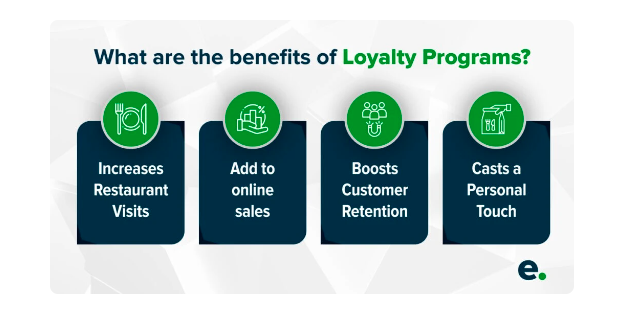
Enhanced Customer Engagement
Personalised Rewards
By analysing purchase history and behavioural data, restaurants can offer rewards that resonate with each customer and cater to individual customer preferences.
Special Promotions
Loyalty software allows restaurants to offer exclusive promotions and deals to their most loyal customers. These promotions could include early access to new menu items, invitations to special events, birthday surprises, a free product, or limited-time discounts.
Exclusive deals not only encourage repeat visits but also a sense of exclusivity and privilege among loyal customers, making them feel special and appreciated.
Increased Customer Retention
Repeat Visits
Whether through a points system, punch cards, or tiered membership levels, rewards programs provide incentives for customers to continue choosing your restaurant over its competitors.
Customer Appreciation
A well-executed loyalty program demonstrates that the restaurant values and appreciates its customers. By consistently recognising and rewarding loyalty, restaurants can build strong emotional connections with their customers.
Valuable Customer Insights
Data Collection
Customer loyalty software provides valuable data on customer preferences, behaviours, and spending patterns. This data can be collected through various touchpoints, such as purchase history, feedback forms, and loyalty program interactions.
By analysing this data, restaurants can gain a deeper understanding of what drives customer satisfaction and tailor their offerings accordingly.
Targeted Marketing
With detailed insights into customer preferences and behaviours, restaurants can create highly targeted marketing campaigns and relevant push notifications.
Targeted marketing campaigns are more likely to resonate with customers and drive higher engagement and conversion rates.
Boosted Revenue
Higher Spend Per Visit
Loyalty programs can encourage customers to spend more per visit by offering targeted promotions and opportunities to earn rewards.
Additionally, tailored upsell suggestions based on past purchases can boost average order values.
Long-Term Loyalty
By nurturing long-term loyalty, these programs can help build a stable and consistent revenue stream. Loyal customers are more likely to visit regularly, spend more, and refer others to the restaurant.
This steady patronage not only contributes to immediate revenue but also helps create a reliable customer base that can sustain the restaurant through fluctuations in the market.
Key Features of Effective Customer Loyalty Software
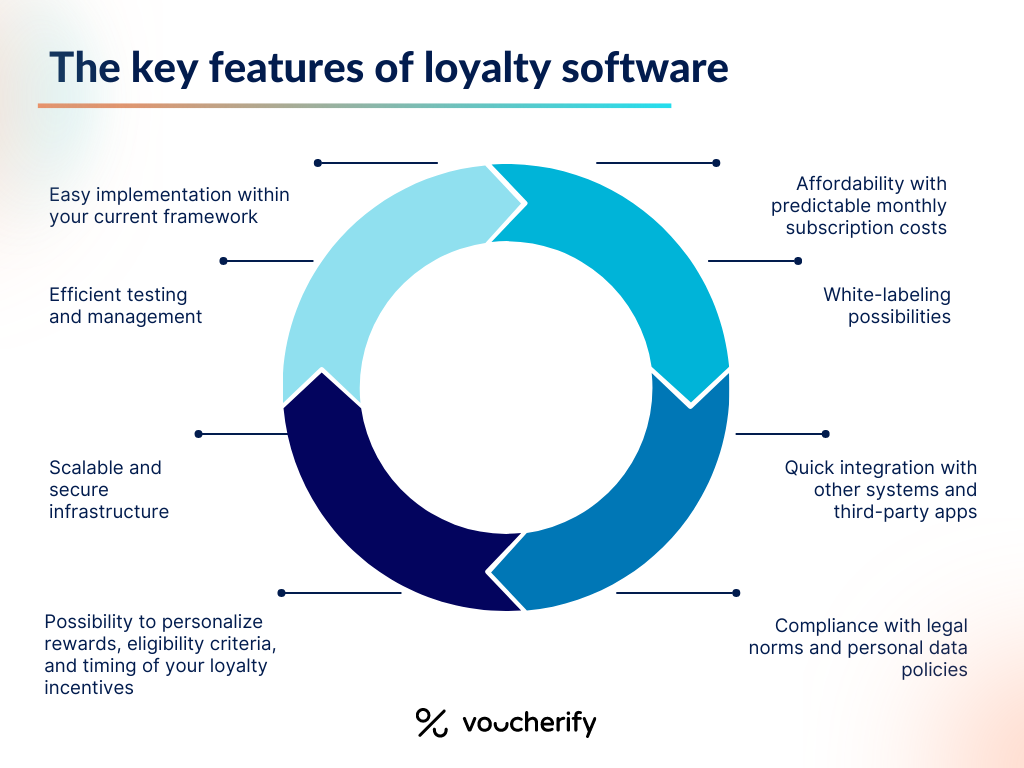
Ease of Use
User-Friendly Interface
A user-friendly interface is vital for successfully adopting customer loyalty software.
The software should be intuitive and straightforward, allowing staff to quickly learn and use it without extensive training. For customers, the enrollment process and participation in the loyalty program should be seamless and easy to navigate.
Integration
Ideally, customer loyalty software should integrate seamlessly with the restaurant’s existing POS systems and other technologies.
This integration allows for smooth data flow between systems, ensuring that loyalty points are accurately tracked, rewards are correctly applied, and customer data is consistently updated.
Compatibility with other technologies, such as payment processors and reservation systems, would further improve the functionality and efficiency of your loyalty program.
Customisable Reward Programs
Flexible Options
An effective loyalty program offers flexibility in the types of rewards that can be provided to customers.
Options can include points for each purchase, discounts on future visits, a free dessert, or exclusive access to special events. This flexibility allows restaurants to tailor their reward offerings to align with their brand, customer preferences, and marketing goals.
Tiered Programs
Tiered loyalty programs add an element of gamification and motivation for customers.
By offering different levels of rewards based on the customer’s loyalty and engagement, restaurants can encourage increased participation. This structure not only incentivises repeat business but also makes customers feel valued as they progress through the tiers.
Real-Time Data and Analytics
Instant Feedback
Real-time data and analytics are essential for monitoring the success of a loyalty program and making informed decisions. The software should provide instant feedback on loyal consumers, such as purchase patterns, reward redemptions, and overall engagement.
This real-time insight allows restaurants to quickly identify trends, measure the effectiveness of promotions, and adjust their strategies to better meet customer needs.
Reporting Tools
Detailed reporting tools are a key feature of a rewards program.
These tools should generate comprehensive reports on various aspects of the loyalty scheme, including customer demographics, customer experience, reward usage, and overall program performance.
By analysing these reports, restaurants can refine their loyalty strategies, identify areas for improvement, and make data-driven decisions to enhance customer engagement and retention.
Mobile Accessibility
Mobile Apps
Mobile accessibility is a critical feature in today’s digital age. Effective customer loyalty software should offer a dedicated mobile app that provides a seamless and convenient experience for customers.
Through the app, customers can easily track their rewards, receive personalised offers, and stay informed about special promotions.
The app should also facilitate easy enrollment and participation in the loyalty program, enhancing customer convenience and engagement.
Digital Wallets
Integration with digital wallets and payment systems further enhances the convenience of customer loyalty software. Customers should be able to link their loyalty accounts with digital payment methods for online ordering, allowing for easy reward redemption and seamless transactions.
This integration not only simplifies the customer experience but also encourages more frequent use of the loyalty program, driving increased engagement and retention.
Implementing Customer Loyalty Software in Your Restaurant
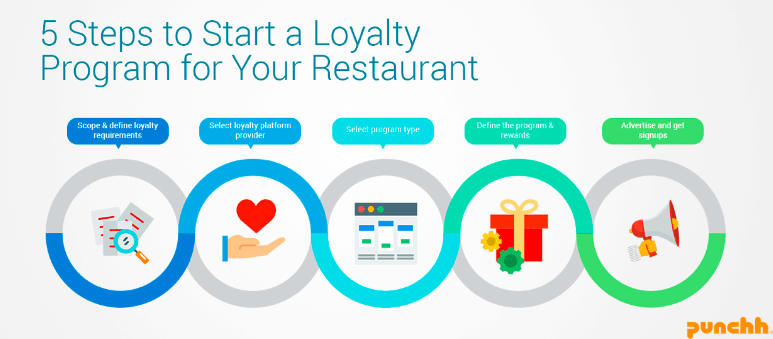
Choosing the Right Software
Feature Comparison
When selecting customer loyalty software, remember evaluate various options based on your specific needs and goals. Create a checklist of must-have features such as ease of use, customisation options, integration capabilities, and data analytics.
Compare different software solutions to see which ones offer the best combination of features that align with your restaurant’s requirements. Consider how each software handles reward management, customer engagement, frequent diners, and reporting to ensure it meets your operational needs.
Vendor Reputation
The reputation and reliability of the software vendor are crucial factors to consider.
Research potential vendors to understand their track record in the industry. Look for customer reviews, case studies, and testimonials to gauge their performance and reliability.
Additionally, consider the level of support and training they offer. A vendor that provides robust support services, including onboarding assistance and ongoing technical support, can significantly enhance the implementation process and long-term success of the software.
Training Staff
Adequate staff training is essential to ensure the successful implementation of customer loyalty software. Provide comprehensive training sessions to ensure all team members understand how to use the software effectively.
Training should cover all aspects of the software, from enrolling customers and managing rewards to generating reports and troubleshooting issues.
Promoting Your Loyalty Program
In-Restaurant Promotion
Promoting your loyalty program within the restaurant is essential for attracting customer participation. Use eye-catching signage, such as posters, table tents, and digital displays, to inform customers about the program and its benefits.
Ensure that staff members actively promote the program during customer interactions, such as at the point of sale, during table service, or while customers wait.
Digital Marketing
Use social media platforms to share updates, success stories, and special promotions related to the loyalty program.
Email newsletters can keep your existing customers informed and engaged with exclusive offers and reminders to join the program.
Ensure that your website prominently features information about the loyalty program, including how to sign up and the benefits of participation. Consider creating a dedicated landing page that provides detailed information and a signup form.
Monitoring and Adjusting the Program
Continuous Improvement
Regular monitoring and evaluation of your loyalty program is essential for its long-term success.
Use the data and analytics provided by your loyalty software to track key performance indicators (KPIs) such as enrollment rates, spend, reward redemption, and customer retention, for example.
Regularly review these metrics to identify trends and areas for improvement. Make necessary adjustments to the program based on your findings, such as modifying rewards, updating marketing strategies, or addressing any operational challenges.
Customer Feedback
Customer feedback is invaluable for refining and enhancing your loyalty program. Encourage customers to provide feedback through surveys, suggestion boxes, or direct communication with staff.
Actively listen to their suggestions and concerns, and use this feedback to make improvements to the program. Regularly communicating changes and updates to customers based on their feedback can demonstrate that you value their input and are committed to providing the best possible experience.
Conclusion
Introducing customer loyalty programs to your restaurant is a strategic move that can dramatically improve customer engagement, retention, and overall revenue.
In this increasingly competitive space, fostering long-term relationships with customers is more crucial than ever. By leveraging the power of personalised rewards, gaining valuable customer insights, and using data-driven marketing, your restaurant can create a compelling loyalty program that keeps customers coming back.
Choosing the right loyalty software, ensuring ease of use, and integrating it seamlessly with your existing systems are foundational steps.
Proper training for staff and effective promotion of the program both in-restaurant and through digital channels are key to driving customer participation and maximising the program’s impact.
Regularly monitoring performance and incorporating customer feedback will help you continuously refine and improve your loyalty program, ensuring it remains relevant and effective.
By investing in customer loyalty software and committing to its successful implementation, your restaurant can build a loyal customer base, increase repeat visits, and create a stable revenue stream.
When hundreds of new restaurants come and go every year, attracting and retaining repeat customers is a taller order than ever before.
While top-class food and service are essential ingredients to success, they alone may not be enough to ensure repeat business from existing customers.
That’s where customer loyalty software truly shines.
A successful loyalty program is a great way to build and maintain strong relationships with diners. Restaurants can increase customer retention, boost revenue, and enhance overall guest satisfaction, while repeat customers can enjoy exclusive rewards and various significant benefits.
This article explores the key benefits of implementing customer loyalty software in your restaurant, helping you to not only meet but exceed customer expectations.
Advantages of the Best Loyalty Programs
- Increased Customer Retention
- Boosts in Revenue
- Enhanced Customer Engagement
- Data-Driven Decision Making
- Improved Customer Experience
Benefits of Implementing Customer Loyalty Programs
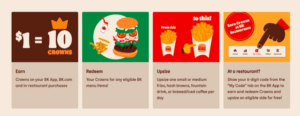
1. Increased Customer Retention
Loyalty Programs Encourage Repeat Visits
Digital loyalty programs are designed to reward repeat customers, making them feel valued and appreciated.
By offering incentives such as discounts, free food, special members only events, bonus points, or exclusive offers, the best restaurant loyalty programs establish a sense of belonging among their patrons.
This sense of loyalty motivates customers to return more frequently to earn and redeem their rewards.
For example, a points-based system that offers a free meal after ten purchases encourages diners to keep coming back until they reach that goal.
Statistics on Customer Retention Rates
Studies have shown that increasing customer retention rates by just 5% can lead to a profit increase of 25% to 95%.
Restaurants with a successful program often see significant improvements in retention.
According to a report by Accenture, 77% of consumers are more likely to stay with a brand that has a strong loyalty program and program benefits. This data underscores the value of loyalty software in fostering repeat business and long-term customer relationships.
2. Boost in Revenue
The Financial Impact of Retaining Customers vs. Acquiring New Ones
Acquiring new customers can be five to seven times more expensive than retaining existing ones.
By focusing on customer retention through loyalty programs, restaurants can save on marketing costs while maximising the lifetime value of each customer.
Loyal customers are more likely to spend more per visit to earn loyalty points, increasing overall revenue without the need for continuous customer acquisition efforts.
How Loyalty Programs Lead to Higher Average Spend Per Visit
Loyalty programs often encourage customers to spend more to reach a threshold established by the rewards program.
For instance, if a program offers birthday rewards or loyalty points for purchases over a certain amount, customers may choose to order an extra dish or dessert to reach that level.
Additionally, exclusive offers for loyalty members, such as limited-time discounts on premium menu items or a free beverage, can also drive higher spending.
Data from industry reports suggest that members of loyalty programs can spend up to 18% more than non-members.
3. Enhanced Customer Engagement
Personalised Marketing and Promotions Based on Customer Preferences
One of the key advantages of loyalty software is the ability to collect and analyse data from your existing customers.
This data can be used to tailor your marketing strategies to individual preferences, increasing the effectiveness of promotions.
For instance, if a customer frequently orders vegetarian dishes, the restaurant can send personalised offers on vegetarian specials or new menu items.
This level of personalisation not only improves the customer experience but also strengthens the bond between the restaurant and the customer.
The Role of Push Notifications, Email Campaigns, and Targeted Offers
Loyalty software enables restaurants to stay connected with their customers through various channels.
Push notifications and emails can be used to remind customers of their rewards, inform them of new promotions, or invite them to exclusive events.
These targeted communications help keep the restaurant top-of-mind and encourage frequent visits. Additionally, special offers tailored to a customer’s past behaviour—such as free drinks or a discount on their favourite dish—can drive immediate engagement and repeat business.
4. Data-Driven Decision Making
How Loyalty Software Provides Valuable Insights into Customer Behaviour
A good digital rewards program tracks a wealth of data, including customer preferences, purchase history, and visit frequency. This data is invaluable for understanding customer behaviour and identifying trends.
For example, a restaurant may discover that a particular dish is popular among loyalty members, prompting them to promote it more widely or develop similar menu items.
The ability to analyse this data allows restaurants to make informed decisions that align with customer interests.
Using Data to Optimise Menu Offerings, Pricing Strategies, and Promotions
By leveraging the insights gained from loyalty software, restaurants can fine-tune their menu offerings to better meet customer demands.
They can also experiment with pricing strategies, such as offering bundle deals to loyalty members or introducing dynamic pricing during off-peak hours.
In addition, data-driven promotions—such as offering a discount on a slow-moving item to frequent customers—can help boost sales and reduce waste.
Overall, data-driven decision-making ensures that the restaurant’s strategies are both effective and customer-centric.
5. Improved Customer Experience
Creating a Seamless, Rewarding Experience for Customers
Loyalty software is designed to enhance the overall customer experience by making it easy and rewarding for customers to participate in the reward program.
Features such as automatic point tracking, instant redemption of rewards, and personalised offers contribute to a seamless experience.
When customers feel redeeming rewards is easy to do and that they are genuinely benefiting from the loyalty scheme, their satisfaction and loyalty to the restaurant increase.
Mobile-Friendly Platforms that Make Loyalty Programs Easy to Access and Use
In today’s digital age, customers expect convenience from restaurant loyalty software and mobile-friendly loyalty platforms deliver that. Many loyalty programs are accessible through smartphone apps, allowing customers to check their points, view available rewards, and receive notifications on the go.
This level of accessibility not only improves the customer experience but also encourages more frequent engagement with the program.
Furthermore, mobile platforms can integrate with other digital services, such as online ordering or reservation systems, creating a unified and convenient experience for the customer.
What is Customer Loyalty Software
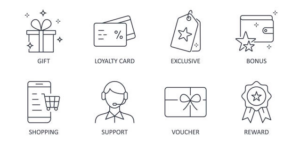
1. What Customer Loyalty Software Is and How It Works
Restaurant loyalty software are specialised tools designed to help businesses, generally restaurants, build and manage customer loyalty programs.
These programs aim to encourage repeat business by rewarding customers for their continued patronage. The software automates various aspects of loyalty programs, such as tracking customer purchases, managing rewards, and collecting valuable customer data.
Loyalty software typically collects this data from customer interactions, such as purchases or engagement with marketing campaigns, and then uses this data to assign points, unlock birthday rewards, or provide personalised offers.
The software also often includes a user-friendly interface for both customers and staff, making it easy to enroll customers in the program, track their progress, and redeem rewards.
2. Types of Loyalty Programs
Points-Based Programs
In a points-based program, customers who participate in the loyalty scheme earn points for each purchase they make.
These points can be accumulated and redeemed for rewards such as discounts, free items, or special offers. For example, a customer might earn one point for every dollar spent, with 100 points redeemable for a free entrée.
Points-based systems are simple and straightforward, making them popular among restaurants.
Tiered Programs
Tiered loyalty programs reward customers based on their level of engagement, often categorised into tiers such as Bronze, Silver, and Gold.
As customers reach higher tiers, they unlock more valuable rewards or exclusive benefits.
A Gold member might receive priority seating or access to limited-time menu items. Tiered programs incentivise customers to increase their spending to achieve higher status.
Paid Membership Programs
In a paid membership program, customers pay a fee to join an exclusive club that offers special benefits. These benefits might include discounts on every purchase, complimentary items, or access to members-only events.
Paid membership programs create a sense of exclusivity and can generate additional revenue streams for restaurants while fostering loyalty among committed customers.
Referral Programs
Referral programs encourage existing customers to refer new customers in exchange for rewards.
For example, a customer might receive a discount or free item for each friend they successfully refer. Referral programs leverage word-of-mouth marketing to attract new customers while rewarding loyal patrons for their advocacy.
3. Integration with Existing Systems
POS Integration
Integration with the POS system allows the loyalty software to automatically track purchases and assign points or rewards based on real-time data.
This streamlines the process for both customers and staff, as points are added immediately after a transaction is completed. It also ensures that rewards are applied accurately at the time of purchase, enhancing the overall customer experience.
CRM Integration
By integrating with CRM tools, loyalty software can leverage customer data to personalise the loyalty program experience.
This includes sending targeted marketing messages, tracking customer preferences, and analysing customer behaviour to identify trends.
CRM integration helps create a more tailored and effective loyalty program that resonates with individual customers.
Mobile App Integration
Many modern loyalty programs are accessible via mobile apps, allowing customers to check their points balance, view available rewards, and receive notifications about special offers on their smartphones.
Mobile app integration also enables features like mobile ordering and payment, making it convenient for customers to engage with the loyalty program anytime, anywhere.
This level of accessibility not only enhances the user experience but also encourages ongoing participation in the program.
Future Trends in Restaurant Loyalty Programs
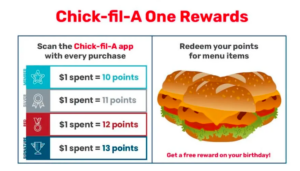
1. The Impact of AI and Machine Learning on Loyalty Programs
Personalised Customer Experiences
Artificial Intelligence (AI) and Machine Learning (ML) are transforming how restaurants design and implement loyalty programs. By analysing vast amounts of customer data, AI can identify patterns and preferences that might not be immediately obvious.
For example, AI can determine which types of rewards are most effective for different customer segments, allowing restaurants to tailor their loyalty offerings more precisely.
This level of personalisation leads to more engaging and relevant loyalty scheme experiences, increasing the likelihood of customer retention.
Predictive Analytics for Customer Behaviour
ML algorithms can predict customer behaviour based on historical data.
If a customer typically visits on weekends, the loyalty program could automatically send them a special offer on a Friday to encourage their return.
Additionally, predictive analytics can identify customers at risk of not returning and trigger targeted incentives to bring them back. This proactive approach helps restaurants maintain a loyal customer base by addressing potential issues before they arise.
Dynamic and Real-Time Rewards
AI also enables dynamic loyalty programs where rewards can be adjusted in real-time based on current demand, customer behaviour, or inventory levels.
For example, if a particular menu item is overstocked, the loyalty program could offer double points for ordering that dish, helping to manage inventory while rewarding customers.
This flexibility ensures that loyalty programs remain relevant and valuable to both the restaurant and its customers.
2. Growing Emphasis on Sustainability and How Loyalty Programs Can Support Eco-Friendly Practices
Eco-Friendly Rewards
As consumers become more environmentally conscious, there is a growing demand for loyalty programs that align with sustainable practices.
Restaurants can respond by offering eco-friendly rewards, such as discounts for bringing reusable containers, or points for opting out of disposable utensils.
These initiatives not only reduce waste but also resonate with customers who prioritise sustainability, strengthening their loyalty to the brand.
Incentives for Sustainable Choices
Loyalty programs can encourage customers to make sustainable choices by rewarding them for actions like choosing plant-based menu items or participating in recycling programs.
For example, customers might earn extra points for ordering from a “green” menu or for returning packaging for reuse.
By integrating sustainability into the digital rewards program, restaurants can promote eco-friendly behaviour while building a positive brand image.
Partnerships with Sustainable Brands
Restaurants can also enhance their loyalty programs by partnering with sustainable brands.
A loyalty program might offer rewards that include products from environmentally responsible companies or donate a portion of earned points to environmental causes.
These partnerships can broaden the appeal of the loyalty program and attract customers who value ethical consumption.
3. The Rise of Mobile and Digital Wallets in Loyalty Program Integration
Seamless Integration with Mobile Wallets
As mobile payments become more prevalent, integrating loyalty programs with digital wallets like Apple Pay, Google Wallet, and others is becoming increasingly important.
This integration allows customers to earn and redeem rewards directly through their mobile wallets, without the need for separate loyalty cards or apps.
The convenience of this system enhances the user experience and encourages more frequent participation in the loyalty program.
Enhanced Customer Engagement Through Mobile Platforms
Mobile integration allows for a more interactive and engaging loyalty experience.
Customers can easily access their loyalty accounts, check their points balance, and receive personalised offers on their smartphones.
Push notifications can alert customers to special deals or remind them of expiring rewards, keeping them engaged with the program.
The portability and accessibility of mobile platforms make it easier for customers to stay connected with the loyalty program, no matter where they are.
Contactless and Secure Transactions
Digital wallets also support contactless payments, which have become increasingly popular due to their convenience and security.
Loyalty programs that integrate with these payment methods offer a seamless, one-tap experience where customers can earn points and redeem rewards without needing to handle physical cards or cash.
This not only speeds up the transaction process but also aligns with the growing consumer preference for touch-free payment options.
Future of Cryptocurrency in Loyalty Programs
Some forward-thinking loyalty programs are exploring the integration of cryptocurrencies as a form of reward.
While still in its early stages, the ability to earn and spend cryptocurrency through a loyalty program could appeal to tech-savvy customers and offer a unique value proposition.
As digital currencies become more mainstream, their role in loyalty programs may expand, offering new opportunities for both customers and businesses.
Omnichannel Loyalty Programs

1. Connecting Online and Offline Experiences
The Rise of Omnichannel Loyalty Programs
Omnichannel loyalty programs are designed to provide a seamless and consistent experience for customers across all interaction points, whether online or offline.
As technology advances and consumer behaviour shifts, restaurants are increasingly recognising the importance of integrating these experiences.
Omnichannel programs ensure that a customer’s journey is cohesive, whether they are dining in, ordering takeout via an app, or engaging with the brand on social media.
Integrating In-Restaurant and Digital Interactions
An omnichannel loyalty program connects traditional in-restaurant experiences with digital platforms.
For instance, customers can earn and redeem loyalty points not only when dining in but also when ordering through a restaurant’s app or website.
Some programs might even extend to interactions on social media, where customers can earn points for engaging with posts, sharing content, or participating in online campaigns.
This integration ensures that no matter where or how a customer interacts with the restaurant, their loyalty is recognised and rewarded.
Enhanced Customer Engagement Through Multi-Channel Touchpoints
By connecting online and offline experiences, restaurants can maintain a continuous dialogue with their customers. For example, after a customer dines in and earns points, they might receive a follow-up email or app notification encouraging them to redeem those points on their next visit or online order.
This consistent engagement across channels helps keep the restaurant top-of-mind and fosters a deeper relationship with the customer.
Examples of Successful Omnichannel Loyalty Programs
Several restaurant chains have successfully implemented omnichannel loyalty programs.
The Starbucks loyalty program, for example, allows customers to earn and redeem rewards whether they order in-store, via the mobile app, or online.
The Starbucks loyalty program is also integrated with the brand’s digital wallet, enabling customers to pay and earn points in one seamless transaction, regardless of the platform used.
This unified experience is key to the program’s success and customer satisfaction.
2. Leveraging Cross-Platform Data
Creating a Unified Customer Profile
Omnichannel loyalty programs leverage data from multiple platforms to create a comprehensive view of each customer. This includes data from in-store transactions, online orders, app interactions, and social media engagement.
By consolidating this data, restaurants can develop a unified customer profile that reflects the individual’s preferences, behaviours, and loyalty status across all touchpoints.
This unified profile is crucial for delivering personalised experiences that resonate with customers.
Personalised Offers and Promotions
With a unified customer profile, restaurants can tailor their loyalty programs to meet individual customer needs. If a customer frequently orders through an app but rarely dines in, the restaurant might offer a promotion that encourages them to visit the physical location.
Similarly, if a customer shows a preference for a particular menu item, targeted offers or recommendations for related items can be sent across various platforms.
This tailored approach improves the relevance of the loyalty program and boosts customer satisfaction.
Consistency Across Touchpoints
One of the main advantages of an omnichannel loyalty program is the ability to offer consistent rewards and recognition across all customer touchpoints.
Whether a customer earns points in-store or online, their loyalty status and available rewards remain the same, providing a seamless experience.
This consistency helps build trust and reliability in the program, encouraging continued participation.
Additionally, consistent messaging across platforms ensures that customers always know where they stand in the loyalty program, reducing confusion and enhancing the user experience.
Using Data for Strategic Insights
Cross-platform data not only enhances the customer experience but also provides valuable insights for the restaurant. By analysing data from various sources, restaurants can identify trends, such as which channels are most popular among loyal customers or which promotions drive the most engagement.
These insights can inform future marketing strategies, menu development, and even operational decisions, helping the restaurant optimise its offerings and improve overall performance.
Challenges and Considerations
While omnichannel loyalty programs offer numerous benefits, they also come with challenges.
Integrating data from multiple platforms requires robust technology infrastructure and a commitment to data privacy and security.
Restaurants must ensure that their systems are capable of handling large volumes of data and that customer information is protected at all times.
Additionally, creating a seamless experience across channels requires careful planning and coordination, particularly when it comes to aligning online and offline rewards.
Optimising Your Customer Loyalty Program
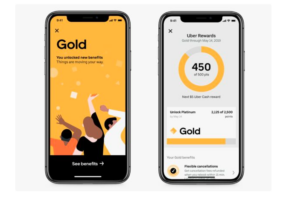
1. Consistency in Communication and Engagement
- The Importance of Regular Communication: Consistent communication is key to keeping loyalty program members engaged and active. Regular updates through various channels—such as newsletters, push notifications, and social media—ensure that customers are always informed about new rewards, upcoming promotions, and exclusive offers. This ongoing communication helps maintain the program’s visibility and encourages continued participation.
- Utilising Multiple Channels: Different customers prefer different methods of communication, so it’s important to use a multi-channel approach. Email newsletters are ideal for detailed updates and special announcements, while push notifications provide instant alerts for time-sensitive offers or reminders about expiring rewards. Social media can be used to engage customers more interactively, sharing success stories, customer testimonials, and new program features. By tailoring the message to the channel, restaurants can maximise their reach and ensure that no customer feels out of the loop.
- Personalising Communications: Personalisation plays a crucial role in making communication more effective. By using the data collected from the loyalty program, restaurants can send custom messages that resonate with individual loyalty program members.
2. Offer a Mix of Rewards
- Catering to Different Customer Preferences: To keep customers motivated and excited about participating in the loyalty program, it’s important to offer a variety of rewards that cater to different preferences. Some customers may appreciate immediate gratification, such as a free drink or dessert with their next purchase. Others might be more motivated by long-term goals, such as accumulating points for a significant discount on a large order or an exclusive dining experience.
- Balancing Short-Term and Long-Term Incentives: A successful loyalty program strikes a balance between short-term and long-term rewards. Short-term rewards keep customers engaged by offering quick wins that make them feel valued. Long-term rewards, on the other hand, encourage customers to continue participating in the program over time, fostering deeper loyalty. For example, a program could offer instant rewards for smaller purchases while providing more substantial benefits, like a free meal or VIP event access, for customers who reach higher point thresholds.
- Seasonal or Limited-Time Rewards: To add variety and maintain interest, consider introducing seasonal or limited-time rewards. These could be tied to holidays, special events, or new menu launches, creating a sense of urgency and exclusivity. Limited-time rewards encourage customers to visit the restaurant more frequently to take advantage of the offer before it expires. This approach also allows the restaurant to experiment with different rewards and see what resonates most with their customer base.
3. Encourage Social Sharing and Referrals
- Leveraging Social Media for Word-of-Mouth Marketing: Social media is a powerful tool for amplifying the reach of your loyalty program. Encouraging customers to share their rewards and experiences on platforms like Instagram, Facebook, or Twitter can generate organic word-of-mouth marketing. For example, customers might post a photo of their free dessert or share a story about their VIP experience, tagging the restaurant in the process. These social shares not only promote the loyalty program but also build a sense of community among participants.
- Creating Shareable Content and Incentives: To facilitate social sharing, provide customers with shareable content, such as branded hashtags, photo-worthy rewards, or stories highlighting other customers’ experiences. Additionally, consider offering incentives for social sharing, such as bonus points or exclusive discounts for customers who post about their rewards online. This not only encourages sharing but also enhances the perceived value of the program.
- Implementing Referral Programs: Referral programs are another effective way to expand the customer base while rewarding existing members. By offering incentives, such as bonus points or free items, for referring friends and family, restaurants can tap into their loyal customers’ networks. A successful referral program should be easy to use, with clear instructions on how to refer others and what rewards are available. Consider offering rewards not just to the referrer but also to the new customer, creating a win-win situation that encourages participation from both sides.
- Tracking and Optimising Referral Efforts: It’s important to track the effectiveness of referral programs to understand which incentives are driving the most referrals and how new customers are responding. Use this data to optimise the program over time, adjusting the rewards or communication strategies to maximise its impact. Successful referral programs not only bring in new customers but also deepen the engagement of existing ones, as they become active promoters of the brand.
Conclusion
Customer loyalty is a crucial component to success for any restaurant.
Implementing an effective loyalty program can be a powerful tool to reward customers and build long-term relationships that drive repeat business and ultimately boost revenue.
By understanding the benefits of loyalty software, staying ahead of future trends, and following best practices, restaurants can create a loyalty program that not only meets customer expectations but exceeds them.
From integrating online and offline experiences to leveraging cross-platform data and offering a diverse mix of rewards, a well-executed loyalty program can transform occasional diners into loyal patrons.
As the functionality of customer loyalty continues to evolve, staying flexible and responsive to customer needs will be key. By continuously refining and optimising their loyalty programs, restaurants can ensure they remain relevant and valuable to their customers.
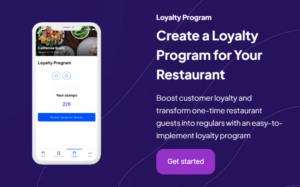
In the restaurant industry, customer loyalty programs have quickly become a vital component to any successful business strategy.
With the rise of digital platforms and the increasing expectations of diners, restaurants turn to customer loyalty software to build and maintain strong relationships with their patrons.
But with so many options on the market, how do you choose the right solution for your business?
Comparing Planforms
When comparing the various loyalty platforms available, be sure to focus on:
- Key features
- Pricing models
- Scalability and flexibility
- Customer experience
- Implementation and onboarding
Key Features to Look For

Customisation
The software should allow you to tailor the loyalty program to reflect your restaurant’s brand identity and resonate with your target audience.
This includes the ability to design the program’s visual elements, set unique reward structures, and create personalised offers that cater to different customer segments. A customisable program ensures that your loyalty initiative feels like an integral part of your brand rather than a generic add-on.
Ease of Use
A loyalty program is only as good as its usability.
The software should offer an intuitive and easy-to-navigate interface for both customers and your staff. For customers, the process of signing up, earning points, and redeeming rewards should be seamless and straightforward.
For staff, the software should be easy to integrate into daily operations without requiring extensive training or disrupting workflow.
Integration Capabilities
To maximise efficiency, your loyalty software should integrate smoothly with your existing POS system, customer relationship management (CRM) software, and other tools you use in your restaurant.
This integration allows for real-time tracking of customer purchases, seamless updating of rewards points, and easy access to customer data, all of which contribute to a more streamlined and effective loyalty program.
Mobile App Support
In today’s mobile-centric world, having a loyalty program that supports a mobile app is essential.
A dedicated mobile app allows customers to easily track their points, receive notifications about special offers, and redeem rewards directly from their smartphones. This convenience can significantly increase customer engagement with your loyalty program.
Data Analytics and Reporting
Robust data analytics and reporting features are crucial for understanding how your loyalty program is performing. The software should provide detailed insights into customer behaviour, such as spending patterns, frequency of visits, and preferences.
Additionally, it should offer reports on the effectiveness of your loyalty initiatives, helping you to identify areas for improvement and optimise your program accordingly.
Marketing and Communication Tools
Effective communication is key to keeping customers engaged with your loyalty program.
Look for software that includes marketing tools like automated messaging, which can send out reminders, special offers, or birthday greetings to your customers.
Email campaign capabilities allow you to reach out to your customer base with tailored promotions, while social media integration lets you to easily share loyalty program updates and engage with customers on platforms where they spend most of their time.
Customer Support
Reliable customer support is essential for ensuring your loyalty program runs smoothly.
The software provider should offer robust support options, including live chat, phone support, and a comprehensive knowledge base to help you troubleshoot any issues that arise.
Having access to prompt and effective technical support ensures that any disruptions to your loyalty program are minimised, keeping your operations running smoothly.
Comparing Pricing Models
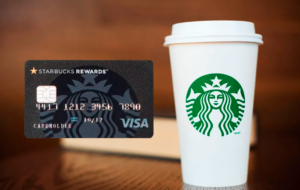
Understanding pricing models is crucial to ensuring that your solution fits within your budget and provides the best value for your investment.
Pricing models can vary significantly between different software providers, so it’s important to look closely at the details to avoid unexpected costs.
Subscription Fees
Most customer loyalty software platforms operate on a subscription-based pricing model, where you pay a monthly or annual fee for access to the service.
These fees can range from affordable rates for basic packages to higher costs for more comprehensive plans that include advanced features.
When comparing subscription fees, it’s important to understand what each plan includes.
Some key aspects to consider are the number of users or customer profiles supported, access to premium features like advanced analytics or custom branding, and whether updates and new features are included in the cost.
Also, consider whether the software offers a free trial or a scaled-down version that you can test before committing to a full subscription.
Transaction Fees
In addition to subscription fees, some loyalty software providers charge transaction fees.
These fees might be applied on a per-transaction basis, meaning you pay a small fee every time a customer earns points or redeems a reward.
Alternatively, there could be a per-user fee, where you are charged based on the number of active users or customers enrolled in the loyalty program. Transaction fees can add up quickly, especially for high-volume restaurants, so it’s important to factor these costs into your overall budget.
Make sure to ask the provider about any transaction fees upfront and calculate how they might impact your costs over time.
Hidden Costs
Some loyalty software providers may charge additional fees for services like customer support beyond basic troubleshooting, customisation of the software to fit your specific needs, or integration with third-party tools and systems.
For instance, if you require a custom-designed loyalty program that reflects your brand’s unique identity, there may be extra charges for development and design work.
Similarly, if you need the software to integrate with your existing POS system, CRM, or other tools, there might be integration fees or charges for API access. It’s crucial to clarify all potential costs with the provider before making a decision to avoid any surprises down the line.
Scalability and Flexibility

As your restaurant business grows and evolves, it’s essential to choose customer loyalty software that can grow with you and adapt to your changing needs.
Can the Software Scale with Your Business?
As you open new locations, increase your customer base, or expand your service offerings, your loyalty program will need to accommodate these changes without disrupting your operations.
Look for software that supports multi-location management, allowing you to administer your loyalty program across various branches seamlessly.
Additionally, consider whether the software can handle a growing number of customer profiles and transactions without performance issues or the need for costly upgrades.
Scalable software should offer the ability to easily add new users, customers, and features as your business expands, ensuring that your loyalty program continues to function efficiently no matter how large your restaurant operation becomes.
Flexibility to Adjust or Upgrade the Program
The restaurant industry is constantly evolving, with customer preferences, dining trends, and technological advancements shifting over time.
Your loyalty program should be flexible enough to adapt to these changes. Look for software that allows you to easily modify your rewards structure, add new types of promotions, or incorporate new engagement channels as needed.
For example, if you notice that customers are increasingly using mobile apps, the software should enable you to introduce mobile-based rewards or integrate with popular mobile payment systems.
The software should support seasonal promotions, limited-time offers, and other dynamic elements that keep your loyalty program fresh and engaging.
Flexibility also means the ability to upgrade your plan or features as your needs change, without having to switch to a completely new platform. This adaptability ensures that your loyalty program remains aligned with both your business goals and the expectations of your customers.
Customer Experience

A successful customer loyalty program isn’t just about rewards—it’s about creating a seamless, engaging experience that keeps customers coming back.
When evaluating loyalty software, it’s crucial to consider how it impacts the overall customer experience.
User Journey
The user journey is at the heart of any loyalty program.
It begins the moment a customer signs up and continues through earning rewards, receiving offers, and redeeming benefits. The process should be intuitive and straightforward, with minimal friction at every step.
A well-designed loyalty program will make it easy for customers to enroll, track their progress, and understand how they can earn and redeem rewards.
Look for software that offers a streamlined sign-up process, clear communication about how the program works, and a user-friendly interface that customers can navigate without confusion.
Consider the engagement features—such as gamification elements, interactive reward systems, or instant gratification rewards—that can enhance the overall experience and keep customers actively participating.
Personalisation
Personalisation is a powerful tool for boosting customer loyalty.
By using customer data to tailor rewards and promotions to individual preferences, you can create a more meaningful and relevant experience for each customer.
Effective loyalty software should be able to analyse customer data—such as purchase history, frequency of visits, and spending patterns—to generate personalised offers that resonate with each diner.
If a customer frequently orders a specific dish, the software could offer a discount on that item or suggest a related promotion. Personalised rewards not only make customers feel valued but also encourage them to engage more deeply with your brand.
Look for software that supports advanced segmentation and targeting capabilities, allowing you to create customised offers that appeal to different customer segments.
Customer Feedback
Gathering and acting on customer feedback is essential for continuously improving your loyalty program and overall customer experience.
The right loyalty software should include tools for collecting feedback, whether through surveys, ratings, or direct comments. This feedback can provide valuable insights into what customers like about your program, what needs improvement, and how they perceive your brand overall.
Moreover, the software should enable you to act on this feedback quickly, whether by making adjustments to the program, addressing individual concerns, or implementing new features based on customer suggestions.
Consider whether the software allows for automated feedback collection, integrates with your CRM to store and analyse feedback, and provides actionable reports that help you make data-driven decisions.
Implementation and Onboarding
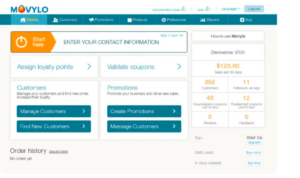
Successfully implementing customer loyalty software in your restaurant requires careful planning and a structured approach.
The implementation and onboarding process is crucial to ensuring that the software is seamlessly integrated into your operations and that your team is fully equipped to use it effectively.
Setup Process
The setup process typically involves several key steps, including initial configuration, customisation, and integration with your existing systems.
During the configuration phase, you’ll need to set up your program’s structure—defining the rewards, tiers, and rules that will govern how customers earn and redeem points.
Customisation allows you to align the program with your brand, including designing the visual elements and setting up personalised features. Integration is crucial, as the software must work smoothly with your POS system, CRM, and any other tools you use.
A thorough setup process will ensure that all components are correctly aligned, reducing the likelihood of technical issues down the line. It’s important to work closely with the software provider during this phase to ensure that all your specific needs are met.
Training for Staff
A successful loyalty program depends on your team’s ability to engage customers, manage the software, and troubleshoot any issues that arise.
The software provider should offer comprehensive training resources, including user manuals, video tutorials, and live training sessions. It’s also beneficial if the provider offers ongoing support, such as a helpdesk or dedicated account manager, who can assist with any questions or challenges that arise after the initial training.
Investing in thorough training for your team will ensure that they are confident and competent in using the software, which in turn will enhance the customer experience and the overall success of the loyalty program.
Timeline
Understanding the expected timeline for implementation is crucial for planning purposes.
The timeline can vary depending on the complexity of the software, the extent of customisation required, and the level of integration with existing systems.
Typically, the process begins with a discovery phase, where your needs are assessed, followed by the setup and customisation phase, which can take several weeks.
Integration with other systems might add additional time, especially if it requires technical adjustments or third-party coordination.
On average, you can expect the full implementation process to take anywhere from a few weeks to a couple of months, depending on these factors. Having a clear timeline in place will help you coordinate with your team and ensure a smooth transition to the new loyalty program.
Measuring Success

After implementing your customer loyalty program, it’s essential to regularly measure its success to ensure it’s meeting your goals and delivering value to your restaurant.
By tracking specific key performance indicators and conducting a ROI analysis, you can evaluate the effectiveness of your loyalty software and make data-driven decisions for future improvements.
KPIs and Metrics
To accurately assess the performance of your loyalty program, you need to monitor customer engagement, retention, and overall business impact.
- Customer Retention Rate: A higher retention rate indicates that your loyalty program is effective in encouraging repeat business.
- Redemption Rate: This tracks the percentage of earned rewards that are actually redeemed by customers. A low redemption rate might suggest that rewards are not attractive or accessible enough.
- Customer Lifetime Value (CLV): CLV calculates the total revenue a customer is expected to generate over their entire relationship with your restaurant. An increase in CLV can indicate that your loyalty program is successfully driving repeat purchases and higher spending.
- Enrollment Rate: This metric measures how many customers are signing up for your loyalty program compared to the total number of patrons. A high enrollment rate indicates that your program is appealing and well-promoted.
- Customer Satisfaction Scores: Using surveys or feedback tools, you can gauge how satisfied customers are with your loyalty program and overall experience.
- Churn Rate: The rate at which customers stop using your loyalty program or stop visiting your restaurant altogether. Monitoring this can help you identify any issues early on.
ROI Analysis
To calculate ROI, you’ll need to compare the costs associated with implementing and maintaining the program against the revenue generated as a result of increased customer loyalty.
- Calculate Program Costs: Include all relevant expenses such as software subscription fees, transaction fees, customisation costs, marketing expenses, and any additional resources required to manage the program.
- Estimate Revenue Impact: Assess the revenue generated directly from the loyalty program, including increased sales from repeat customers, higher average spend, and any new customers brought in through referrals. You can also include the value of customer data insights that help improve marketing and operational decisions.
- Break-Even Analysis: Determine how long it will take for the benefits of the loyalty program to offset its costs. This helps in understanding the timeframe needed to achieve a positive ROI.
- Ongoing Monitoring: ROI should be continuously monitored, especially as your program evolves. Regular analysis will help you make adjustments to improve performance and ensure that your investment continues to deliver value.
Understanding Customer Loyalty Software
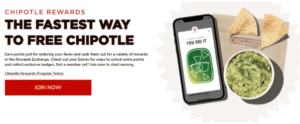
What is Customer Loyalty Software?
Customer loyalty software is a digital tool designed to help businesses build, manage, and enhance your customer loyalty programs.
These platforms help restaurants create structured systems that reward repeat customers for their continued patronage.
The purpose of customer loyalty software is to encourage repeat business, increase customer retention, and ultimately drive higher revenue by offering incentives that keep customers coming back.
Loyalty software typically integrates with a restaurant’s existing point of sale system, making it easy to track customer purchases, accumulate rewards points, and deliver personalised offers based on individual dining habits.
Beyond simple rewards, these systems often include analytics features that provide insights into customer behaviour, allowing restaurants to tailor their marketing efforts and create more targeted promotions.
Types of Customer Loyalty Programs
Customer loyalty programs come in various forms, each with its own unique structure and benefits.
Here are the most common types:
- Point-Based Programs
- Overview: In point-based loyalty programs, customers earn points for every purchase they make, which can later be redeemed for rewards. This type of program is simple and intuitive, making it popular among restaurants.
- How It Works: A customer might earn one point for every pound spent, and once they accumulate a certain number of points, they can redeem them for a free item, discount, or other rewards.
- Benefits: Point-based programs are easy to implement and understand, and they encourage frequent visits as customers work towards earning their rewards.
- Tiered Programs
- Overview: Tiered loyalty programs offer different levels of rewards based on the customer’s spending or frequency of visits. As customers spend more or visit more often, they move up to higher tiers with better rewards.
- How It Works: A restaurant might have three tiers—Silver, Gold, and Platinum—with each tier offering increasingly valuable rewards, such as larger discounts, exclusive offers, or special event invitations.
- Benefits: Tiered programs are effective at encouraging higher spending and creating a sense of exclusivity. Customers are motivated to reach the next tier to unlock better benefits.
- Subscription-Based Programs
- Overview: Subscription-based loyalty programs require customers to pay a recurring fee to join the program, in exchange for special perks and benefits.
- How It Works: A restaurant might offer a subscription where customers pay a monthly fee to receive benefits such as free appetisers, priority reservations, or discounts on every visit.
- Benefits: These programs generate a steady stream of revenue for the restaurant and create a committed customer base. They also appeal to regular customers who see value in the recurring benefits.
- Hybrid Models
- Overview: Hybrid loyalty programs combine elements from different types of programs to create a more customised experience for customers.
- How It Works: A hybrid program might offer a combination of points and tiers, where customers earn points for every purchase but also move up tiers based on their total points or spending levels. Alternatively, a restaurant could combine a subscription model with points-based rewards.
- Benefits: Hybrid programs offer flexibility and can be tailored to fit the specific needs and preferences of a restaurant’s customer base, making them highly adaptable and potentially more engaging.
Conclusion
Choosing the right customer loyalty software for your restaurant is a critical decision that can have a lasting impact on your business.
By understanding the different types of loyalty programs, prioritising key features, carefully considering pricing models, and ensuring scalability and flexibility, you can select a solution that aligns with your goals and enhances your customer experience.
Implementation and onboarding are crucial steps that require careful planning to ensure a smooth transition and successful launch.
Once your program is in place, regularly measuring its success through KPIs and ROI analysis will help you fine-tune your approach and maximise the benefits of customer loyalty.
In an industry where customer retention is key to sustained growth, a well-executed loyalty program can set your restaurant apart from the competition.
For assistance in finding the right loyalty platform for your business, get in touch with NFS.
As any restaurant owner could attest, the industry is highly competitive.
Attracting new customers is always a priority, but building loyalty among your existing clientele is the true secret to long-term success.
A well-designed customer loyalty program can turn first-time visitors into regular patrons, fostering a deeper connection between your brand and your customers.
But not all loyalty programs are created equal.
To stand out and make a lasting impact, you’ll need to innovate and tailor your strategies to meet the unique preferences of your diners.
With some planning, there are several effective strategies for boosting your restaurant’s customer loyalty programs and keeping guests coming back.
Digital vs. Traditional Loyalty Programs
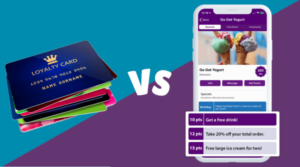
As the restaurant industry evolves, so do the methods used to build customer loyalty.
Traditional loyalty programs, such as punch cards and physical membership cards, have been a mainstay for years. However, the rise of digital technology has introduced a new wave of loyalty programs in the form of mobile apps and online platforms that reward customers.
Understanding the benefits and drawbacks of each approach can help you choose the most effective strategy for your restaurant.
Traditional Loyalty Programs: The Old-School Charm
Benefits:
- Simplicity: Traditional loyalty programs are straightforward. Customers receive a physical punch card or membership card that they present at each visit to accumulate rewards. The simplicity of this approach is appealing, especially for diners who may not be tech-savvy or prefer tangible items.
- Immediate Gratification: There’s something satisfying about receiving a stamp or punch on a card. It’s a visual and tactile reminder of progress in the rewards program, which can be particularly motivating for customers.
- Low-Cost Setup: Implementing a traditional loyalty program often requires minimal upfront investment. Printing punch cards or issuing membership cards is relatively inexpensive compared to developing a custom mobile app.
Drawbacks:
- Limited Data Collection: Traditional loyalty programs don’t easily capture customer data. Without digital tracking, it’s difficult to analyse customer behaviour, preferences, or spending patterns. This lack of data can hinder personalised marketing efforts.
- Loss or Damage: Physical cards can be easily lost, forgotten, or damaged. If a customer loses their card, they may lose interest in the program, leading to decreased engagement.
- Inflexibility: Traditional programs offer limited flexibility in terms of reward structures and personalised offers. The one-size-fits-all nature of these programs may not cater to the diverse preferences of your customer base.
Digital Loyalty Programs: The Modern Advantage
Benefits:
- Data-Driven Insights: Digital loyalty apps allow you to collect valuable data on customer behaviour, including purchase history, frequency of visits, and preferred menu items. This data can be used to create targeted marketing campaigns and personalised offers that resonate with individual customers.
- Convenience and Accessibility: Customers can access digital loyalty programs through their smartphones, making it easy to check their reward status, redeem offers, and receive notifications. This convenience encourages more frequent engagement with the program.
- Personalisation and Customisation: Digital platforms allow you to tailor rewards and offers to individual customers based on their preferences and behavior. For example, a customer who frequently orders coffee might receive a special discount on their favourite brew.
- Integration with Other Technologies: Digital loyalty programs can be integrated with other systems, such as online ordering platforms, CRM systems, and social media channels. This integration allows for a seamless customer experience and more opportunities for engagement.
Drawbacks:
- Higher Initial Costs: Developing a custom loyalty app or partnering with a third-party platform can require a significant initial investment. However, this cost may be offset by the long-term benefits of increased customer engagement and data insights.
- Learning Curve: Some customers, particularly older or less tech-savvy individuals, may find digital loyalty programs difficult to navigate. It’s important to provide clear instructions and support to ensure all customers can easily participate.
- Data Privacy Concerns: With digital programs comes the responsibility of managing customer data securely. Ensuring compliance with data protection regulations, such as GDPR, is crucial to maintaining customer trust.
Enhancing the Customer Experience with Technology
Technology has the potential to greatly enhance the customer experience in loyalty programs. Digital apps can offer features such as:
- Personalised Offers: Based on their dining habits, customers can receive tailored promotions, such as discounts on their favourite dishes or special offers on their birthday.
- Gamification: Introducing game-like elements, such as challenges or achievements, can make the loyalty program more engaging. For example, customers could earn extra points for trying new menu items or visiting during off-peak hours.
- Real-Time Notifications: Push notifications can keep customers informed about their reward status, upcoming promotions, or new menu items. This real-time communication helps keep your restaurant top-of-mind.
- Seamless Redemption: Digital programs allow for easy redemption of rewards. Customers can simply show a QR code or tap their phone at the point of sale, making the process quick and hassle-free.
Customer Loyalty Program Incentives

Incentives are the cornerstone of any successful customer loyalty program.
The right rewards not only encourage repeat visits but also create a sense of value and appreciation that keeps customers coming back.
However, it’s important to strike a balance between offering enticing rewards and maintaining profitability. Let’s explore some effective incentive ideas and discuss how to manage this balance.
Ideas for Rewarding Loyalty
- Discounts on Future Purchases
- How it Works: Customers earn a percentage off their next visit after spending a certain amount. For example, after spending £50, they receive a 10% discount on their next meal.
- Why It Works: Discounts are immediate and straightforward, making them a popular choice. They encourage customers to return sooner rather than later to take advantage of the savings.
- Free Items or Meals
- How it Works: After a set number of visits or purchases, customers can earn a free appetiser, dessert, or even a full meal.
- Why It Works: Offering something for free creates a strong emotional response and a sense of value. It’s a tangible reward that customers can look forward to.
- Exclusive Events or Access
- How it Works: Loyal customers receive invitations to special events, such as wine tastings, cooking classes, or preview nights for new menu items.
- Why It Works: Exclusive events make customers feel like VIPs. This type of reward builds a deeper connection with your brand and offers an experience that goes beyond the regular dining visit.
- Personalised Offers
- How it Works: Based on their preferences and purchase history, customers receive personalised rewards, such as discounts on their favourite dishes or a complimentary drink on their birthday.
- Why It Works: Personalisation shows that you value your customers as individuals. Tailored offers are more relevant and likely to be used, enhancing customer satisfaction and loyalty.
- Points-Based Rewards
- How it Works: Customers earn points for every purchase, which can be redeemed for rewards such as discounts, free items, or exclusive experiences.
- Why It Works: Points-based systems are flexible and can cater to a wide range of customer preferences. They also create a sense of progress and achievement as customers accumulate points.
- Tiered Rewards
- How it Works: Create different levels of rewards based on customer spending or visit frequency. For example, reaching “Gold” status could unlock special discounts, while “Platinum” status might offer priority reservations or exclusive menu items.
- Why It Works: Tiered programs motivate customers to increase their spending or visits to reach higher levels of rewards. They add an element of gamification and competition that can be very engaging.
- Referral Rewards
- How it Works: Encourage customers to refer friends by offering them a reward for each successful referral. The new customer might also receive a welcome discount or bonus points.
- Why It Works: Referral rewards help expand your customer base while also rewarding existing customers for their loyalty. It’s a win-win that leverages word-of-mouth marketing.
Balancing Attractive Rewards with Profitability
While offering generous rewards can drive customer loyalty, it’s crucial to ensure that these incentives don’t erode your profit margins. Here are some strategies to maintain profitability:
- Analyse Customer Lifetime Value (CLTV)
- Why It Matters: Understanding the long-term value of a loyal customer can help you justify the initial investment in rewards. If a customer’s lifetime value significantly outweighs the cost of the incentives, the program is likely profitable.
- Set Clear Earning Thresholds
- How It Helps: By requiring customers to reach a certain spending level or number of visits before earning a reward, you can ensure that the rewards are sustainable. For example, offering a free meal after 10 visits spreads the cost across multiple transactions.
- Offer Rewards with Low Marginal Costs
- Why It Works: Consider rewards that have a high perceived value but low cost to your business. For example, a complimentary drink or dessert might cost less than offering a full meal but still feels like a generous reward to the customer.
- Implement Expiration Dates
- How It Helps: Setting expiration dates on rewards encourages customers to use them sooner, driving repeat visits. It also prevents the accumulation of unused rewards that could later impact profitability.
- Monitor Redemption Rates
- Why It Matters: Regularly track how often rewards are redeemed and adjust the program as needed. If a particular reward is too popular and impacting your margins, consider adjusting the earning threshold or offering a different reward.
- Use Tiered Rewards to Drive Higher Spending
- How It Helps: Encourage customers to spend more to reach higher reward tiers. For example, offering premium rewards at higher levels incentivises customers to increase their spending, which can offset the cost of the rewards.
- Leverage Supplier Partnerships
- Why It Works: Partner with suppliers or local businesses to offer rewards that don’t directly impact your costs. For example, a wine supplier might provide bottles for a loyalty event, or a nearby bakery might offer pastries as part of a cross-promotion.
Personalisation and Customisation

In today’s competitive restaurant landscape, personalisation is a powerful tool that can significantly improve customer engagement and loyalty.
By tailoring offers and experiences to individual customers based on their past behaviour and preferences, restaurants can create more meaningful connections that resonate on a personal level.
The Power of Personalisation
- Tailored Offers Based on Purchase History
- How It Works: By analysing customers’ past orders and dining habits, you can create personalised offers that are more likely to appeal to them. For instance, if a customer frequently orders a particular dish, you can offer a discount on that item or suggest complementary menu options.
- Why It Works: Customers appreciate when their preferences are recognised and rewarded. Personalised offers feel more relevant and are more likely to be redeemed, leading to increased customer satisfaction and repeat visits.
- Birthday and Special Occasion Rewards
- How It Works: Collect customers’ birthdates or other special dates (such as anniversaries) and surprise them with a special offer or complimentary item to celebrate the occasion.
- Why It Works: Celebrating personal milestones with your customers fosters a deeper emotional connection with your brand. It shows that you care about them as individuals, not just as patrons, which can significantly boost loyalty.
- Personalised Communication
- How It Works: Use customer data to tailor communication, such as email marketing or in-app notifications. Address customers by their names, reference their favourite dishes, or send reminders about their preferred dining times.
- Why It Works: Personalised communication feels more genuine and engaging. Customers are more likely to respond positively to messages that feel relevant to their specific interests and behaviours.
- Customisable Loyalty Rewards
- How It Works: Allow customers to choose their rewards from a selection of options based on their personal preferences. For example, after earning a certain number of points, they could choose between a free dessert, a discount on their next meal, or an exclusive invite to a special event.
- Why It Works: Giving customers control over their rewards increases their satisfaction with the loyalty program. They are more likely to engage with a program that offers flexibility and caters to their individual tastes.
- VIP or Exclusive Access
- How It Works: Identify your most loyal customers and offer them exclusive perks, such as priority reservations, first access to new menu items, or invitations to private events.
- Why It Works: VIP treatment makes customers feel valued and appreciated, encouraging them to continue their loyalty. This sense of exclusivity can also create a sense of community among your most engaged patrons.
The Role of CRM Systems in Personalisation
Customer Relationship Management (CRM) systems are crucial for managing the data needed to deliver personalised experiences. Here’s how CRM systems can help:
- Centralised Customer Data
- How It Helps: CRM systems store all customer data in one place, including purchase history, preferences, and feedback. This centralised database allows you to easily access and analyse customer information to create targeted marketing campaigns and personalised offers.
- Why It Matters: Having a comprehensive view of each customer enables you to make informed decisions about how to engage them. This data-driven approach ensures that your personalisation efforts are accurate and effective.
- Segmentation and Targeting
- How It Helps: CRM systems allow you to segment your customer base into different groups based on various criteria, such as spending habits, frequency of visits, or dietary preferences. You can then tailor offers and communication to each segment.
- Why It Matters: Segmentation allows for more precise targeting, ensuring that your marketing efforts are relevant to each customer group. This targeted approach increases the likelihood of engagement and redemption of offers.
- Automating Personalised Campaigns
- How It Helps: CRM systems can automate the process of sending personalised offers and communication. For example, you can set up automated emails to be sent on customers’ birthdays or after a certain number of visits.
- Why It Matters: Automation saves time and ensures consistency in your personalisation efforts. It allows you to scale your marketing without the need for manual intervention, ensuring that every customer receives timely and relevant offers.
- Tracking and Analytics
- How It Helps: CRM systems provide insights into the performance of your personalised campaigns. You can track metrics such as open rates, redemption rates, and customer feedback to assess the effectiveness of your personalisation strategies.
- Why It Matters: Analysing the results of your campaigns allows you to continuously refine and improve your personalisation efforts. By understanding what works and what doesn’t, you can make data-driven decisions that enhance customer engagement.
- Integrating with Other Systems
- How It Helps: CRM systems can integrate with other technologies, such as point-of-sale systems, online ordering platforms, and loyalty apps. This integration ensures that all customer interactions are captured and used to inform personalisation efforts.
- Why It Matters: Seamless integration across platforms creates a unified customer experience. Whether a customer is dining in, ordering online, or engaging with your loyalty program, their interactions are consistent and personalised.
Marketing Your Loyalty Program
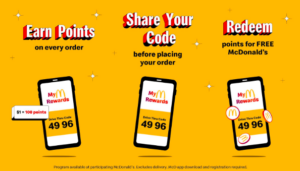
Creating a stellar loyalty program is only half the battle; effectively marketing it is essential to ensure its success.
Promoting your loyalty program through a mix of in-store and online strategies will help you reach a broader audience and encourage sign-ups.
Clear communication and ease of use are key to maximising participation.
In-Store Promotion Strategies
- Visible Signage
- How It Works: Place eye-catching signage at key locations within your restaurant. Use posters, banners, or digital screens to highlight the benefits of joining the loyalty program.
- Why It Works: Visible signage ensures that every customer who walks into your restaurant is aware of your loyalty program. It serves as a constant reminder to sign up, especially for repeat visitors.
- Staff Engagement
- How It Works: Train your staff to promote the loyalty program to customers during their interactions. They can mention it while taking orders, during payment, or when handing out receipts. Staff should be knowledgeable about the program’s benefits and able to answer any questions customers may have.
- Why It Works: Personalised recommendations from staff can significantly influence customer decisions. When a friendly server or cashier suggests joining the program, customers are more likely to consider it.
- Point-of-Sale Integration
- How It Works: Integrate your loyalty program sign-up process directly into your point-of-sale (POS) system. During checkout, prompt customers to join the program and explain the immediate benefits they’ll receive, such as a discount on their next purchase.
- Why It Works: The convenience of signing up at the point of sale, especially when tied to an instant reward, encourages immediate action. It reduces the friction of having to sign up later through a different process.
- Incentivise Sign-Ups
- How It Works: Offer a small incentive for joining the loyalty program, such as a free drink, dessert, or a discount on the current bill. Highlight this offer in your in-store promotions and during customer interactions.
- Why It Works: An immediate reward provides customers with a tangible reason to sign up on the spot. It also gives them a taste of the benefits they can expect from the program.
Online Promotion Strategies
- Website Integration
- How It Works: Feature your loyalty program prominently on your website. Include a dedicated page that explains the program’s benefits, how to join, and any current promotions. Ensure that the sign-up process is simple and accessible from any device.
- Why It Works: Your website is often the first place potential customers visit to learn more about your restaurant. A well-promoted loyalty program on your site can capture interest and drive sign-ups, even before a customer visits in person.
- Social Media Marketing
- How It Works: Use your social media platforms to regularly promote your loyalty program. Share posts that highlight the benefits, showcase rewards, and feature customer testimonials. Consider running social media-exclusive promotions where followers can earn extra points or rewards for joining.
- Why It Works: Social media is a powerful tool for reaching a broad audience and engaging with your customers. Regular promotion on these platforms keeps your loyalty program top-of-mind and encourages followers to sign up.
- Email Marketing
- How It Works: Include information about your loyalty program in your email newsletters. Send targeted emails to existing customers who haven’t joined the program yet, offering them a special incentive to sign up. Use email to keep current members informed about new rewards, events, or updates to the program.
- Why It Works: Email marketing allows you to directly reach your customers and provide them with detailed information about your loyalty program. Personalised emails can effectively drive sign-ups and keep members engaged.
- Influencer Partnerships
- How It Works: Partner with local influencers, food bloggers, or social media personalities to promote your loyalty program. They can share their experience with the program, showcase rewards, and encourage their followers to join.
- Why It Works: Influencers have a dedicated following that trusts their recommendations. A positive endorsement from a well-known local influencer can boost the credibility of your loyalty program and attract new members.
- Online Ordering and Delivery Platforms
- How It Works: If your restaurant offers online ordering or partners with delivery platforms, promote your loyalty program on these channels. Include an option to sign up during the checkout process or offer loyalty points for orders placed online.
- Why It Works: Many customers interact with your restaurant primarily through online ordering platforms. Promoting your loyalty program here ensures that these customers are aware of the benefits and are encouraged to join.
The Importance of Clear Communication and Ease of Use
- Simple Sign-Up Process
- How It Works: Make the sign-up process for your loyalty program as simple and quick as possible. Whether it’s through a mobile app, website, or in-store, ensure that customers can join with minimal effort, ideally in just a few clicks or taps.
- Why It Matters: A complicated or time-consuming sign-up process can deter customers from joining. The easier it is to sign up, the more likely customers are to participate.
- Clear Communication
- How It Works: Clearly communicate the benefits of your loyalty program across all channels. Use concise, compelling language that highlights the rewards customers can expect. Ensure that the program’s terms and conditions are easy to understand.
- Why It Matters: Customers need to know what’s in it for them. If the benefits and process are clearly communicated, customers are more likely to see the value in joining and staying engaged with the program.
- Ongoing Engagement
- How It Works: Regularly remind customers about your loyalty program and its benefits. Use a mix of in-store prompts, social media posts, and email reminders to keep the program top-of-mind. Update members about new rewards, exclusive offers, and upcoming events.
- Why It Matters: Ongoing engagement keeps your loyalty program active and relevant. Regular communication ensures that customers don’t forget about the program and continue to take advantage of its benefits.
Common Pitfalls to Avoid

While loyalty programs can be a powerful tool for fostering customer loyalty and driving repeat business, there are several common pitfalls that restaurants often encounter when designing and managing these programs.
By being aware of these potential issues and implementing solutions, you can ensure that your loyalty program remains effective and engaging over the long term.
1. Overly Complicated Structures
The Pitfall:
- Some loyalty programs are designed with complex rules, multiple tiers, or intricate point systems that can confuse customers. If the program is too complicated, customers may become frustrated and disengaged, leading to low participation rates.
The Solution:
- Keep it Simple: Design your loyalty program with simplicity in mind. Ensure that the rules are straightforward, the rewards are easy to understand, and the path to earning those rewards is clear. For example, a simple points-based system where customers earn points for every pound spent is easy for customers to grasp and track.
- Clear Communication: Provide clear instructions and examples of how the program works, both in-store and online. Use simple language and visuals to help customers understand the benefits and how they can participate.
2. Lack of Clear Communication
The Pitfall:
- A loyalty program’s success relies heavily on effective communication. If customers are unaware of the program, don’t understand how to join, or are unclear about the rewards, participation will suffer.
The Solution:
- Promote Consistently: Regularly promote your loyalty program across all customer touchpoints, including in-store signage, social media, your website, and through email marketing. Make sure customers know about the program from the moment they interact with your brand.
- Transparent Information: Ensure that the terms and conditions, earning structures, and redemption processes are clearly outlined. Avoid fine print and ambiguity. Transparency builds trust and encourages participation.
3. Failing to Update the Program Over Time
The Pitfall:
- A loyalty program that remains static over time can become stale and lose its appeal. If customers feel that the program is no longer offering fresh or valuable rewards, they may lose interest and stop participating.
The Solution:
- Regular Updates: Periodically review and update your loyalty program to keep it fresh and exciting. Introduce new rewards, add seasonal or limited-time offers, and consider refreshing the earning structure to keep customers engaged.
- Solicit Feedback: Regularly gather feedback from your customers to understand what they like about the program and where improvements can be made. Use this feedback to make informed adjustments that align with customer preferences.
4. Offering Rewards with Low Perceived Value
The Pitfall:
- If the rewards offered through your loyalty program don’t provide sufficient value or relevance, customers may not feel motivated to participate. Rewards that are too small, too difficult to redeem, or unrelated to customer preferences can diminish the program’s appeal.
The Solution:
- Offer Meaningful Rewards: Ensure that your rewards are desirable and relevant to your customer base. Consider offering a mix of rewards, including discounts, free items, and exclusive experiences, to cater to different customer preferences.
- Ease of Redemption: Make the reward redemption process simple and accessible. Customers should be able to easily understand how to earn and redeem their rewards, without jumping through hoops.
5. Neglecting Personalisation
The Pitfall:
- A one-size-fits-all approach to loyalty programs can fail to resonate with a diverse customer base. Neglecting to personalise rewards and offers can make the program feel generic and less engaging.
The Solution:
- Leverage Data for Personalisation: Use customer data to personalise offers and rewards. Tailor rewards based on customer preferences, purchase history, and behaviour.
- Segment Your Audience: Consider segmenting your customer base and offering different rewards or communication strategies to different segments. This allows you to cater to the specific needs and preferences of various groups within your customer base.
6. Ignoring Customer Feedback and Engagement
The Pitfall:
- Failing to listen to customer feedback can lead to a loyalty program that doesn’t meet their needs or expectations. If customers feel that their opinions are not valued, they may disengage from the program.
The Solution:
- Actively Seek Feedback: Regularly ask for customer feedback on the loyalty program through surveys, social media, or direct interactions. Listen to what customers are saying and be willing to make adjustments based on their input.
- Engage with Customers: Maintain an ongoing dialogue with your customers about the loyalty program. Respond to their questions, address their concerns, and make them feel involved in the program’s evolution.
7. Underestimating the Importance of Analytics
The Pitfall:
- Not tracking the performance of your loyalty program can result in missed opportunities for improvement. Without data, it’s difficult to know what’s working and what’s not.
The Solution:
- Monitor Key Metrics: Track metrics such as sign-up rates, participation levels, redemption rates, and overall customer engagement. Use this data to assess the program’s effectiveness and identify areas for improvement.
- Iterate Based on Insights: Use the insights gained from your analytics to make data-driven decisions about the program. If certain rewards are more popular or if specific segments are more engaged, tailor your strategy accordingly.
8. Lack of Integration with Overall Brand Strategy
The Pitfall:
- A loyalty program that feels disconnected from your overall brand strategy can be less effective. If the program doesn’t align with your brand values or customer experience, it may not resonate with your audience.
The Solution:
- Align with Brand Values: Ensure that your loyalty program reflects your brand’s values and overall customer experience. For example, if your restaurant focuses on sustainability, consider offering eco-friendly rewards or partnering with like-minded brands.
- Consistency Across Channels: Integrate your loyalty program into your broader marketing and customer engagement efforts. The program should feel like a natural extension of your brand and be consistently represented across all channels.
Conclusion
A well-crafted loyalty program can be a game-changer for your restaurant, hopefully transforming occasional diners into devoted regulars.
By understanding the nuances of digital versus traditional programs, offering meaningful incentives, and embracing personalisation, you can create a loyalty program that truly resonates with your customers.
Remember to market your program effectively, avoid the common pitfalls, and continually update and refine your approach to keep it fresh and relevant.
In today’s competitive restaurant landscape, loyalty isn’t just earned—it’s cultivated through thoughtful strategy and consistent effort.
By investing in a loyalty program that reflects your brand values and meets the needs of your customers, you’re not only enhancing their dining experience but also building a strong foundation for sustained success.
If you need assistance finding the right platform for your loyalty program, contact NFS.
It’s tough out there in hospitality land. Customers facing cost of living squeezes, labour hard to come by, costs soaring and competition at an all-time high. But the best operators are doing impressively well – and we know exactly why.
Big names like GAUCHO, Dishoom, Marugame Europe and Doner Shack – valued clients of NFS Hospitality – are leveraging the power of technology to support their thriving operations.
Read on to discover the tips you can take from the big names – and to know 5 ways technology can improve your restaurant operations.
Boosting efficiency and customer satisfaction
Both of these factors are major players when it comes to success, and as a result leveraging technology in restaurant operations has become indispensable.
From streamlining order management to enhancing customer experiences and promoting loyalty, restaurant technology is important in in optimising workflow and maximising profitability in restaurant operations of all sizes. It’s why restaurant pos system software represents a good investment.
5 ways technology can improve your restaurant operations
- Streamlining the ordering process
- Optimising your labour
- Enhanced customer engagement and loyalty
- Better inventory management
- Data-supported decision making
Streamlining the ordering process
Customers want convenience these days, and for many that means the ability to browse menus and order their meal online.
The best epos offers an online food ordering system, that integrates with online ordering platforms such as Grubhub or Uber Eats. This is not only quick and easy for customers but also provides increased accessibility to your services to a wider audience.
Customised mobile apps allow customers to browse the menu and make their selection effortlessly whether they are at home or in your outlet, leading to improved engagement and driving up the possibility of repeat ordering.
Optimising your labour
Labour is at a premium these days, and restaurants are working hard to ensure a good working environment where staff are happy to stay. It’s also crucial to operations and the bottom line to make the best use of the staff available.
That’s where epos comes in. Implementing tableside ordering tablets for either the diners or your serving staff enables orders to be sent immediately to the kitchen, eliminating human error that gets food sent back and reducing the time it takes for the order to arrive. It also reduces the time staff need to run back and forth to the kitchen, so they can put their valuable efforts into engaging with the diners and upselling.
POS systems also streamline order processing, simplify payment transactions – payment can also be taken at tableside – and provides valuable insights into sales trends and staff performance thanks to comprehensive reporting.
Your data can be used to organise shift scheduling, ensuring that you have optimal staffing levels and busy and less busy times – it’s a good way to minimise staff costs while maximising efficiency and offering the best customer service. Providing good training alongside the epos technology equips your staff with the necessary skills to give great service and enjoy their work.
Enhanced customer engagement and loyalty
All the big-name NFS clients we mentioned above (and many others) have exceptional reputations for customer engagement and effective loyalty programmes that reward diners and build up a valuable bond.
They use customer loyalty program software to achieve the best results, and also enable their customer base to act as ambassadors by using gift card management software to treat their friends and relatives to a meal.
Implementing Customer Relationship Management (CRM) systems allows restaurants to gather incredibly valuable customer date and personalise interactions with them. This means marketing offers are targeted to people who are likely to make the most of them, and encourages a sense of belonging.
Feedback management programmes allow restaurants to collect, analyse and respond to customer feedback promptly. It’s a great way not only to head off complaints at the pass, but also to foster a culture of continuous improvement across the whole organisation.
All of these facilities can be accessed online by managers anywhere, reducing the need to duplicate head office functions in multi-location groups and creating an end-to-end view of the business at all times – something that can otherwise be hard to achieve in the hurly-burly of hospitality operations.
Better inventory management
Reducing food waste is high on the agenda of any hospitality business seeking to create a sustainable environment, and it also makes huge sense financially.
Restaurant management software, with its real-time reporting, enables excellent inventory tracking so stock levels are accurately recorded and wastage is drastically reduced. It also enables your staff to quickly understand when a dish becomes unavailable, allowing them to manage the expectations of guests by offering an alternative.
Predictive analytics is a further ingredient in the recipe for restaurant success, helping forecast demand trends so you can optimise stock levels and make proactive decisions and cost savings.
Integrating with your suppliers via technology streamlines your procurement process, making sure deliveries are timely and inventory levels are kept up to scratch.
Data-supported decision making
Business intelligence tools designed specifically for hospitality operations enable restaurant owners to analyse key metrics for performance, identify upcoming trends and make data-drive decisions that will improve operational efficiency and the profitability of the business.
Leveraging the real-time reporting capabilities of epos provides managers and owners with up-to-the-minute insights into sales performance, inventory levels and customer feedback so you can take timely corrective actions where needed and create long-term strategies for continued success.
Integrating various restaurant technology solutions into your epos platform, such as a table reservation system ensures seamless data flow across the different operational functions, taking the guesswork out of decision-making and providing firm foundations on which to grow your business.
Conclusion – technology is the special sauce
What does real restaurant success look like these days? Great food, outstanding customer service, costs and wastage under control and happy, motivated staff who are not run off their feet meeting diner expectations every day.
No surprises there – but supporting all these excellent ambitions in today’s hospitality industry is technology, the special sauce that brings it all together and makes the magic happen.
It’s why the most successful restaurants and groups in the UK have deployed epos technology and its integrated facilities, and are reaping the benefits even as we speak. It’s an investment that makes perfect sense – a gift to operations that will keep on giving however circumstances in the industry evolve.
The concept of rewarding customers for their loyalty is a time-honoured tradition that has significantly evolved over the decades. While loyalty programmes are now a common fixture in the competitive landscape of the hospitality industry, their origins can be traced back to the Great Depression. A notable early example was Betty Crocker’s innovative approach, encouraging customers to collect cake-mix box tops and mail them in exchange for money-saving coupons. This rudimentary form of a loyalty programme laid the groundwork for the complex and highly beneficial schemes we see in the restaurant sector today.
The Evolution of Loyalty Programmes
The transformation of loyalty programs has been largely driven by advancements in technology. These programmes have transitioned from simple, tangible rewards to sophisticated, data-driven systems that offer insights into customer behaviour and preferences. For restaurants, the adoption of loyalty programmes has proven to be particularly advantageous. Not only do these programmes incentivize additional purchases and higher spending, but they also facilitate a deeper understanding of a restaurant’s most valued patrons. This enables the provision of highly personalised services, enhancing the overall dining experience and fostering stronger guest relationships.
In the current era, loyalty programmes are celebrated for their capacity to significantly impact a restaurant’s bottom line. They serve as an effective strategy for attracting new customers, converting casual visitors into regulars, and elevating sales figures. Despite the diversity in how these programmes are structured and implemented, the core advantages they offer remain steadfast: they contribute to customer satisfaction, drive revenue growth, and strengthen guest loyalty.
The Mechanics of Loyalty Programmes
At its essence, a loyalty programme functions as a strategic tool for restaurants to cultivate and enhance relationships with their clientele. By enrolling in a loyalty programme, guests are rewarded with perks such as free items, points, or other incentives with every purchase they make. Beyond the immediate rewards, these programmes are instrumental in gathering valuable data about guests’ dining habits and preferences. This information is critical for tailoring services and creating more meaningful dining experiences that resonate with individual tastes.
Loyalty programmes can manifest in various forms, ranging from traditional punch cards to digital rewards tracked through mobile apps or integrated into a restaurant’s POS system. Some establishments elevate the concept by offering paid memberships that unlock an array of exclusive benefits, from VIP treatment to special event invitations.
The Objectives and Benefits of Loyalty Programmes
The overarching goal of a loyalty programme is to motivate repeat patronage and elevate customer spending. However, the ripple effects of a well-executed loyalty programme extend far beyond financial gains:
Transforming New Customers into Regulars: The Salesforce report highlights that acquiring new customers can be up to six times more costly than retaining existing ones. Loyalty programmes offer a cost-effective solution for converting first-time visitors into loyal patrons, thereby reducing customer acquisition costs and enhancing profitability. The gamification aspect of earning points can also amplify customer enjoyment and association with the brand.
Attracting New Customers: Offering enticing rewards through a loyalty programme can serve as a powerful lure for potential customers, providing a competitive edge. These initial perks may carry a minimal cost to the restaurant but offer substantial value to guests, laying the groundwork for a profitable long-term relationship.
Boosting Revenue: Customers engaged in a loyalty programme tend to visit more frequently and spend more, with Salesforce reporting up to 18% higher spending by loyalty programme members. This increase in revenue underscores the importance of loyalty programmes in fostering a dedicated customer base.
Personalised Service and VIP Treatment
The real magic of a successful loyalty programme lies in its ability to personalise the guest experience. By leveraging customer data, restaurants can offer personalised touches that resonate deeply with guests, from remembering their preferred seating to anticipating their favourite dishes. This level of personalised service not only enhances the dining experience but also elevates the restaurant’s status in the eyes of its guests, making it their go-to choice.
The Spectrum of Loyalty Programmes
Choosing the right loyalty programme structure is pivotal to its success. Options include:
Tiered Loyalty Programmes: Guests unlock progressively better rewards as they reach higher spending thresholds. This model encourages increased spending and deepens customer engagement.
Points-Based Programmes: Customers earn points relative to their spending, which can be redeemed for discounts or free items. This straightforward approach is popular for its simplicity and direct value to guests.
Subscription-Based Programmes: These programmes offer continuous perks for a regular fee, providing consistent value and fostering loyalty through repeated engagement.
Visit frequency-based programmes: Rewarding customers based on the frequency of their visits, rather than the amount spent, emphasises the value of consistent patronage.
Leveraging Technology in Loyalty Programmes
The integration of technology is crucial for the modern loyalty programme. Digital platforms and POS systems not only streamline the operation of these programmes but also provide a wealth of data on customer preferences and behaviours. This enables restaurants to tailor their offerings more precisely and recognise and reward their most loyal customers effectively.
Implementing a Robust Loyalty programme
While setting up a loyalty program might seem daunting, the investment of time and resources is justified by the manifold benefits. We can help, all you have to do is click below.
Technology plays a crucial role in streamlining restaurant operations, enhancing customer experiences, and driving growth. However, as restaurant owners and operators look to build or upgrade their tech stacks, they face a critical decision: should they opt for best-in-class solutions for each specific need, or is an all-in-one platform a more efficient approach? This blog explores the pros and cons of each option, offering insights to help you make the best choice for your restaurant.
Best-in-Class Solutions: Tailored Excellence
Pros:
Specialisation: Best-in-class solutions offer specialised features that cater to specific aspects of restaurant operations, such as reservations, point-of-sale (POS) systems, inventory management, or customer relationship management (CRM). This specialisation often means these solutions are more advanced in their specific domain, offering deeper functionality and customisation.
Flexibility: By choosing individual best-in-class solutions, restaurants can mix and match technologies based on their unique needs, ensuring they’re getting the best tool for each aspect of their operations.
Innovation: Because these solutions focus on a specific niche, they are often at the forefront of innovation within their domain, quickly integrating new technologies and trends.
Cons:
Complexity in Integration:Utilising multiple specialised solutions can lead to challenges in integration, as not all systems may work seamlessly together. This can result in data silos and inefficiencies in operations.
Higher Costs: Investing in several best-in-class solutions can be more expensive than a single all-in-one platform. Subscription fees, integration costs, and the need to potentially hire experts to manage and maintain multiple systems can add up.
Management Overhead: Each solution comes with its learning curve, updates, and support needs, requiring more time and resources for staff training and management.
All-in-One Platforms: Streamlined Simplicity
Pros:
Integration: All-in-one platforms are designed to offer a cohesive experience, with various functionalities integrated into a single system. This eliminates data silos and ensures smoother operations across all areas of the restaurant.
Cost-Effectiveness: Generally, all-in-one solutions can be more cost-effective than the cumulative expense of multiple best-in-class systems. With a single subscription, you get a range of functionalities.
Simplified Management: Managing a single system is inherently simpler. Training staff, performing updates, and accessing support become more straightforward, freeing up time and resources for other tasks.
Cons:
Jack of All Trades, Master of None: While all-in-one solutions cover a wide range of functionalities, they may not offer the depth or customisation that a specialised solution does in each particular area.
Limited Flexibility: With an all-in-one platform, restaurants are somewhat at the mercy of the provider for updates and new features. If the platform is slow to innovate in a particular area, the restaurant might miss out on leveraging new technologies that could benefit its operation.
Potential for Unnecessary Features: These platforms often come with a wide range of features, not all of which may be relevant to every restaurant. This can lead to paying for functionalities that go unused.
Making the Choice: Aligning with Your Restaurant’s Needs
The decision between best-in-class solutions and an all-in-one platform ultimately depends on your restaurant’s specific needs, goals, and resources. Here are some considerations to guide your choice:
Assess Your Specific Needs: Understand the unique challenges and opportunities within your restaurant. Are there areas where specialised functionality could drive significant improvements? Or would a streamlined, integrated system better suit your operational model?
Consider Your Growth Plans: If you’re planning to scale, think about how your tech stack will need to evolve. Flexibility and the ability to integrate innovative solutions might become increasingly important.
Evaluate Your Resources: Consider both the financial and human resources available to manage your tech stack. A larger, more tech-savvy team might handle a complex ecosystem of best-in-class solutions, while smaller teams may benefit from the simplicity of an all-in-one platform.
Building your restaurant’s tech stack is a critical decision that can significantly impact your operation’s efficiency, customer satisfaction, and bottom line. Whether you choose best-in-class solutions for their specialised functionality and innovation or opt for the streamlined simplicity of an all-in-one platform, the key is to select a strategy that aligns with your restaurant’s needs and growth objectives. By carefully considering your options and making an informed decision, you can ensure your technology investment supports your restaurant’s success in the competitive hospitality landscape.










